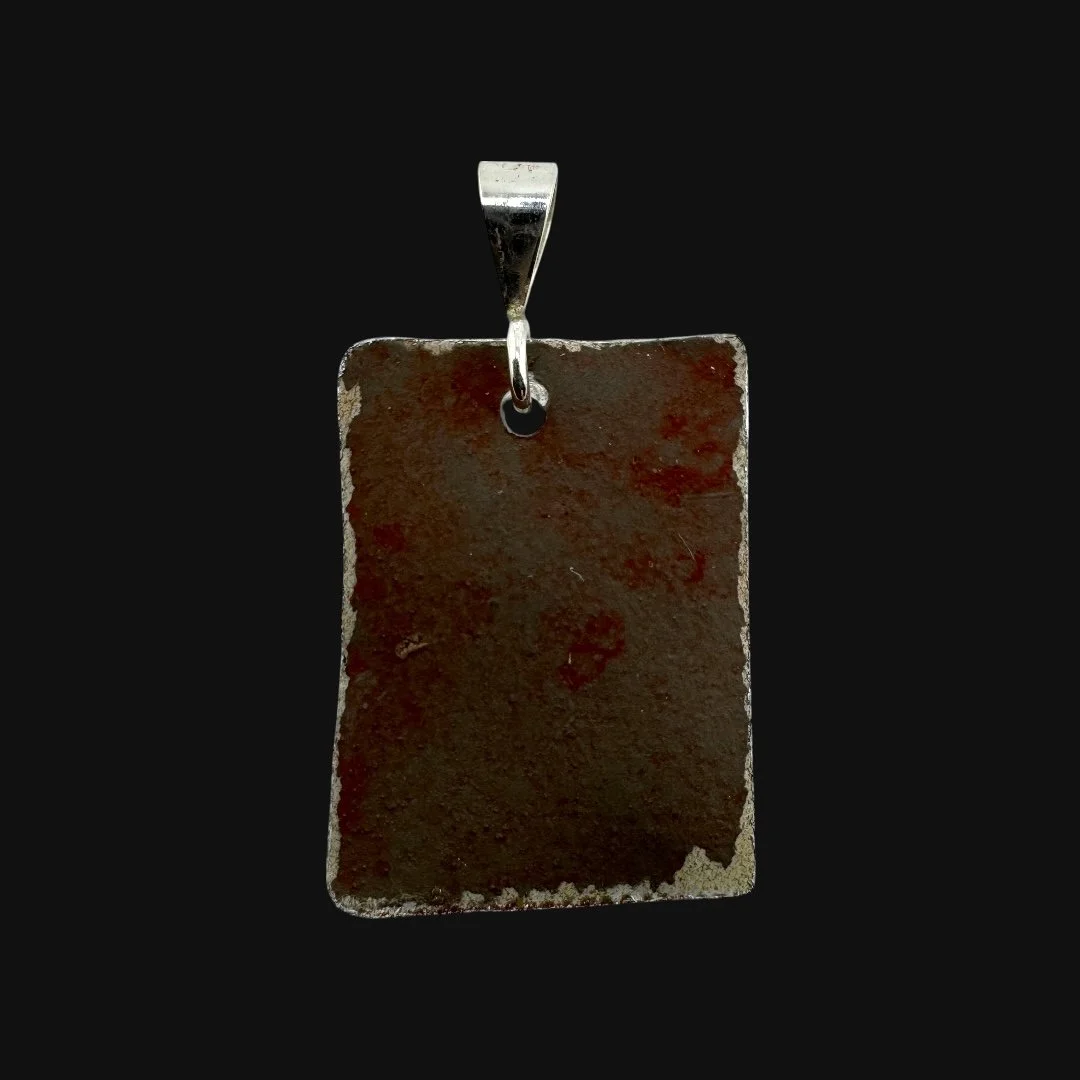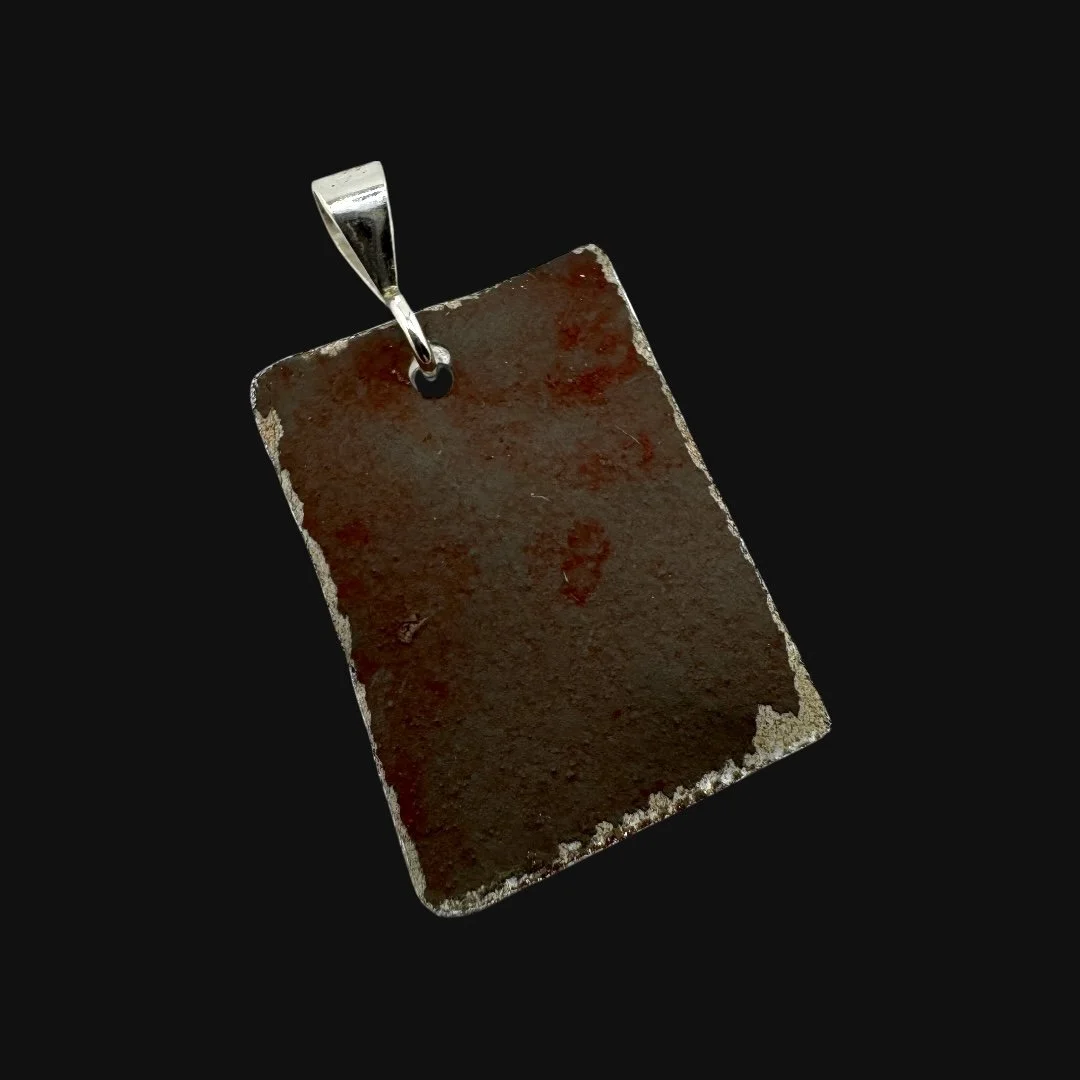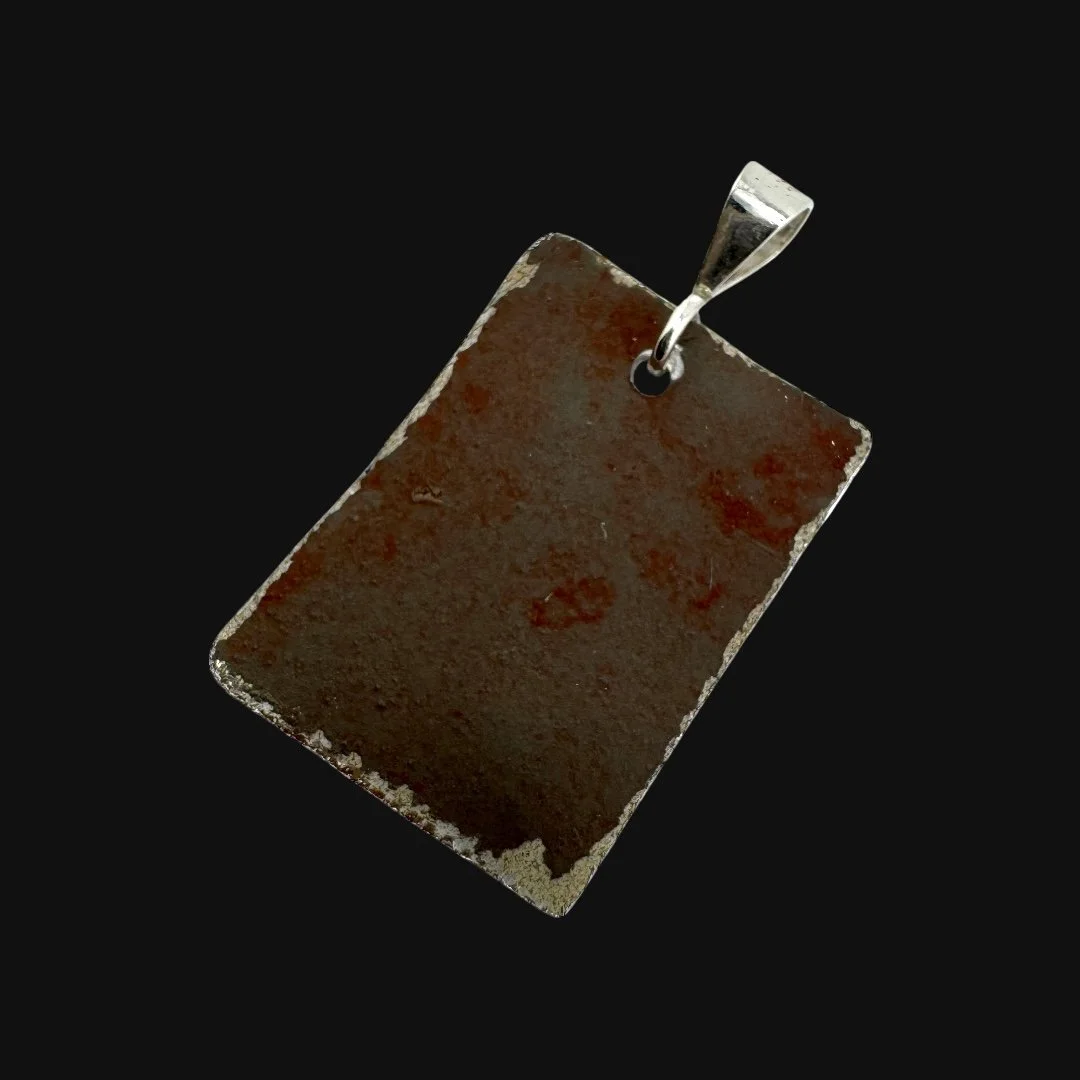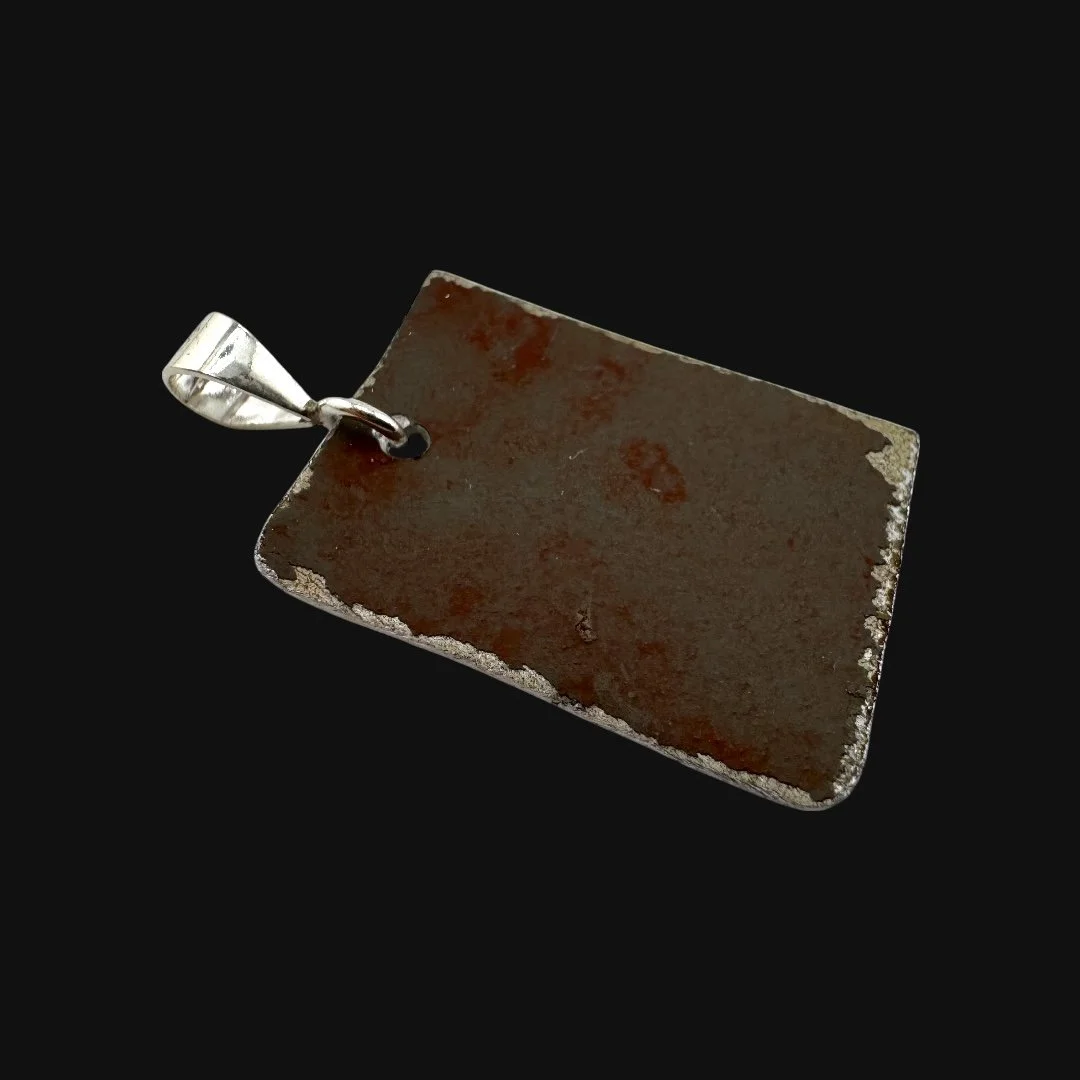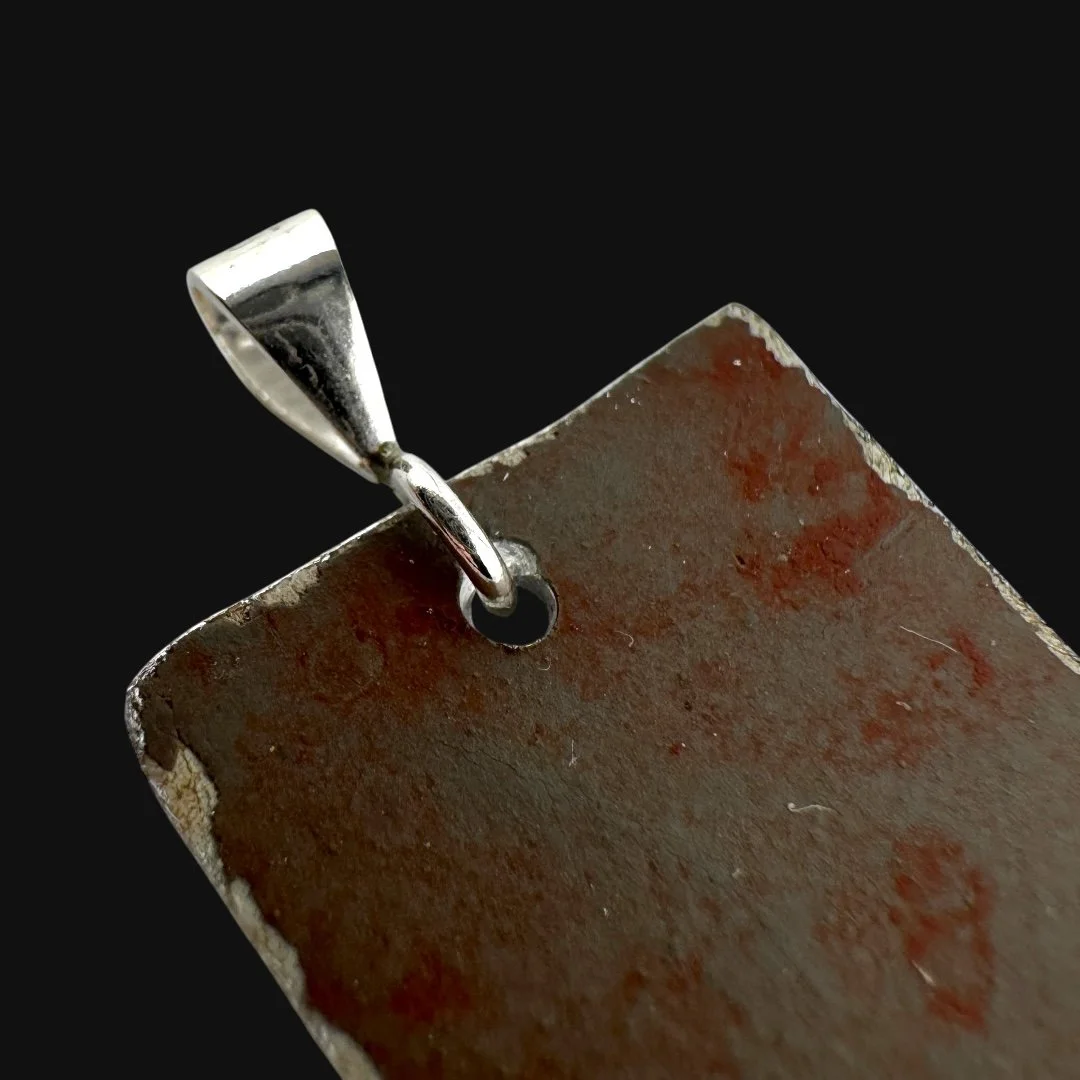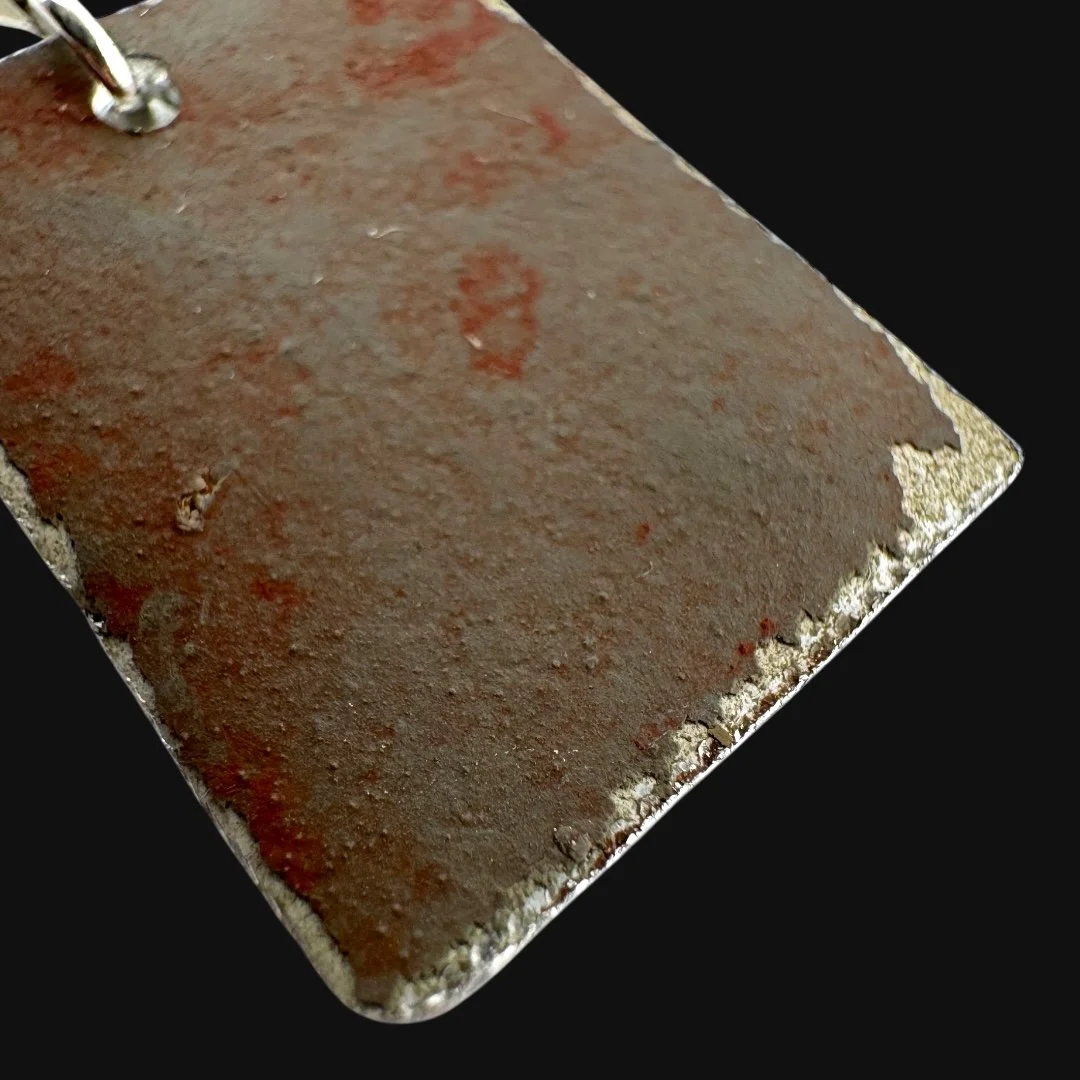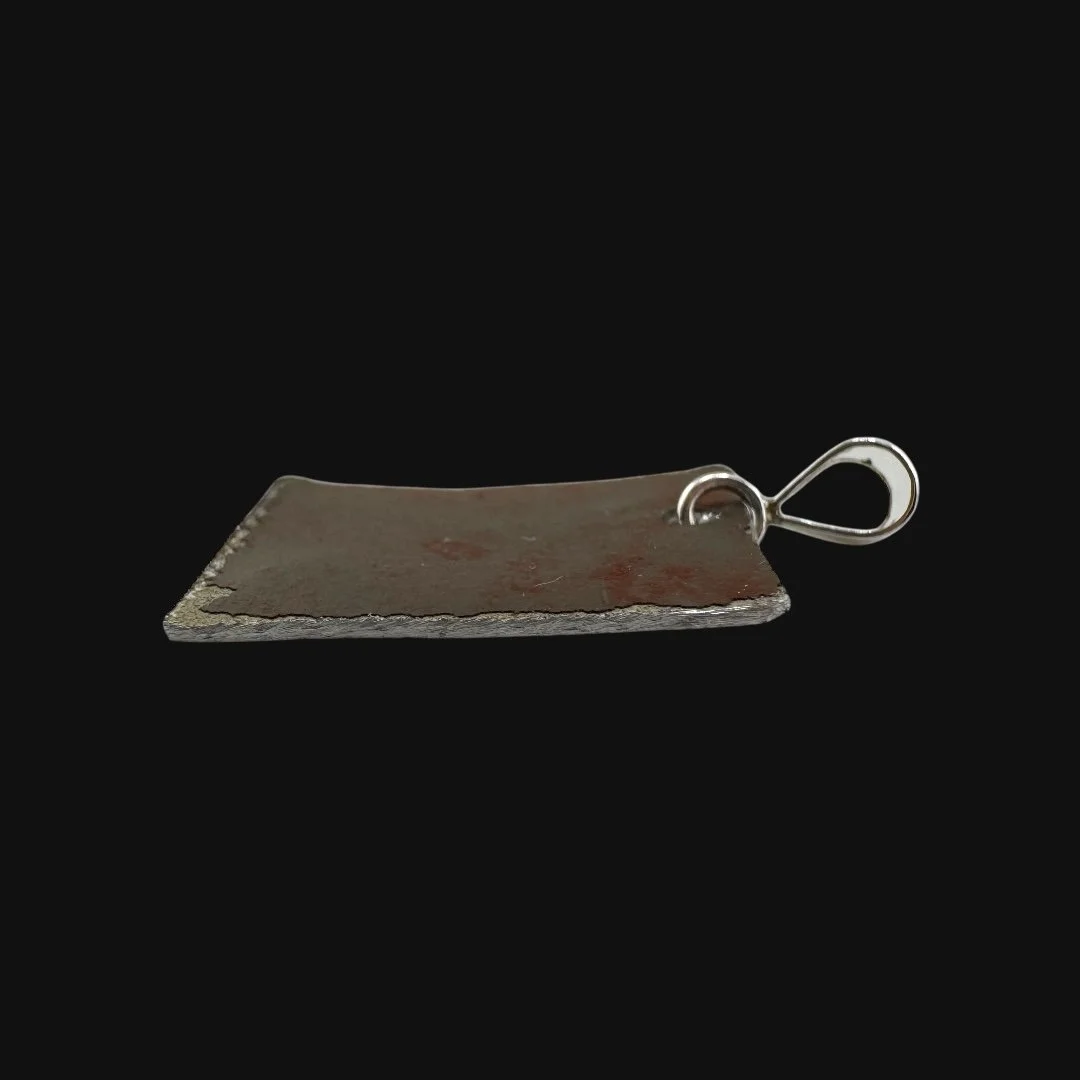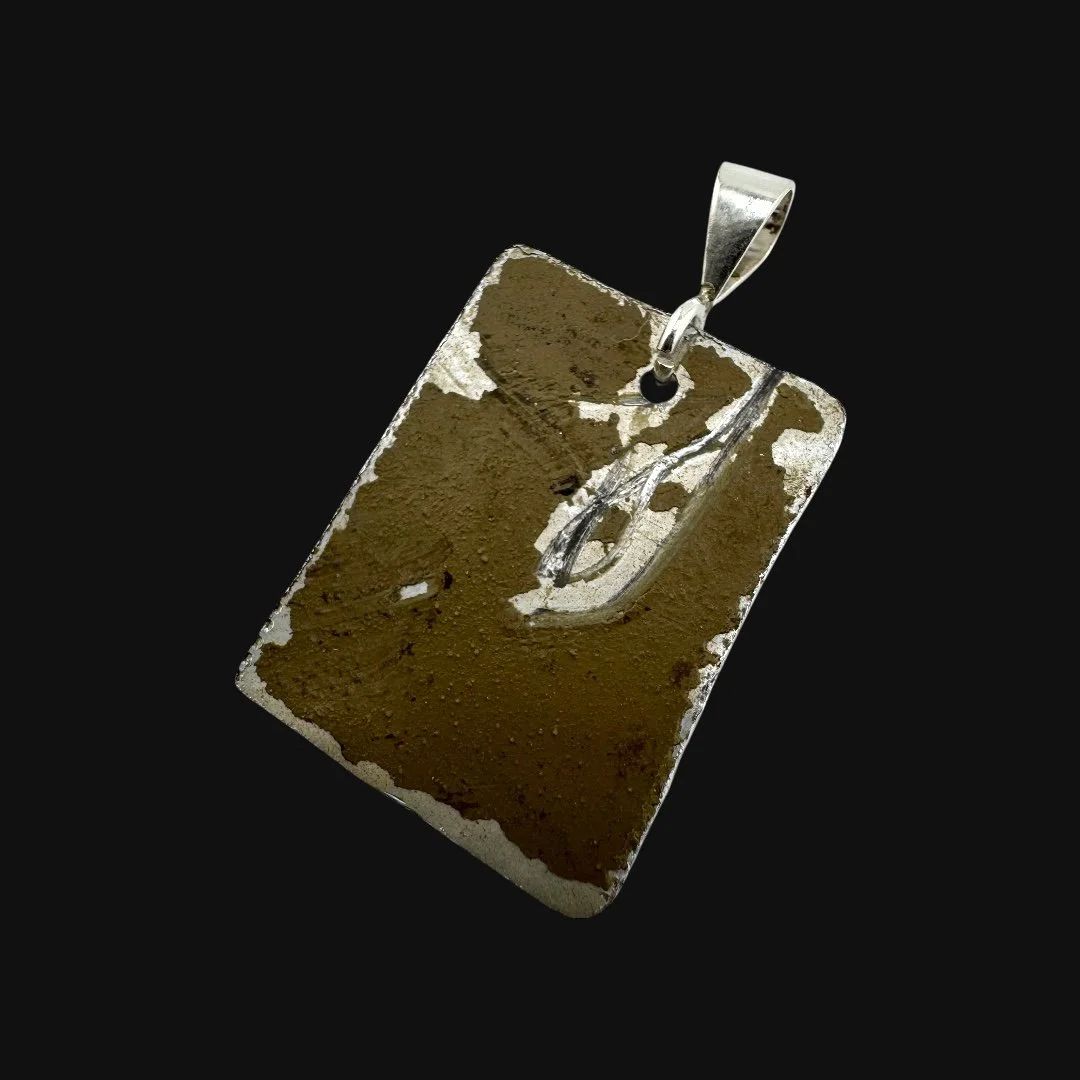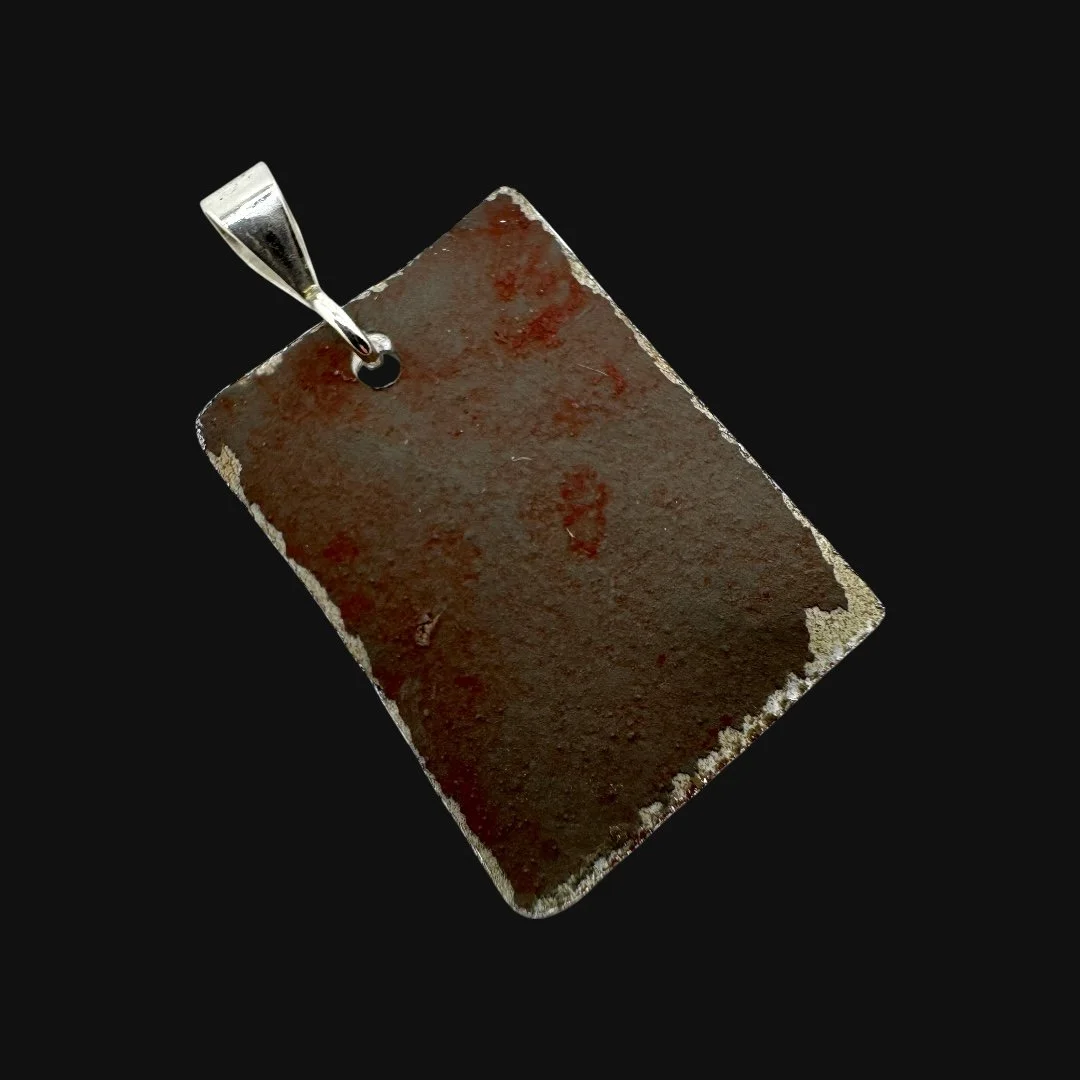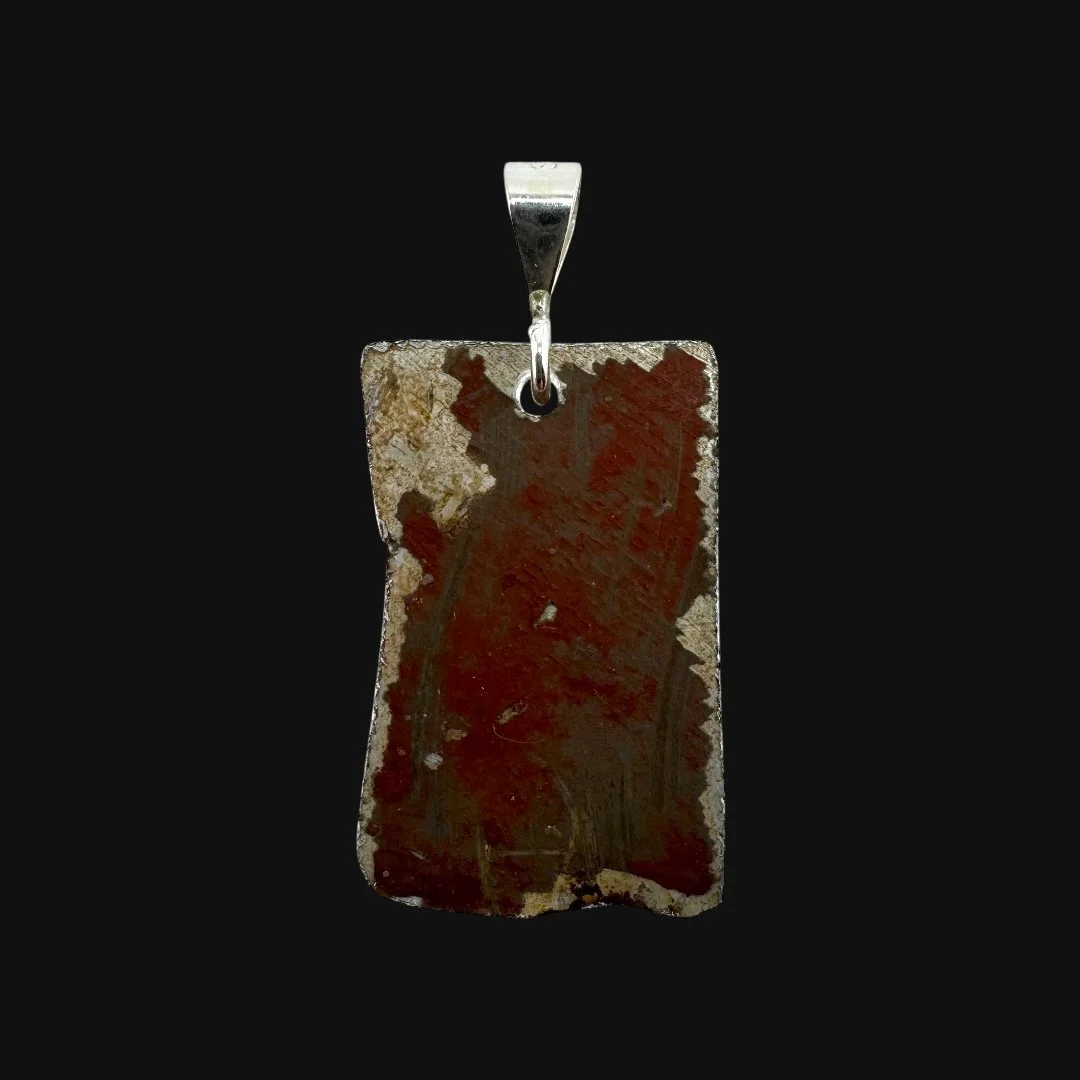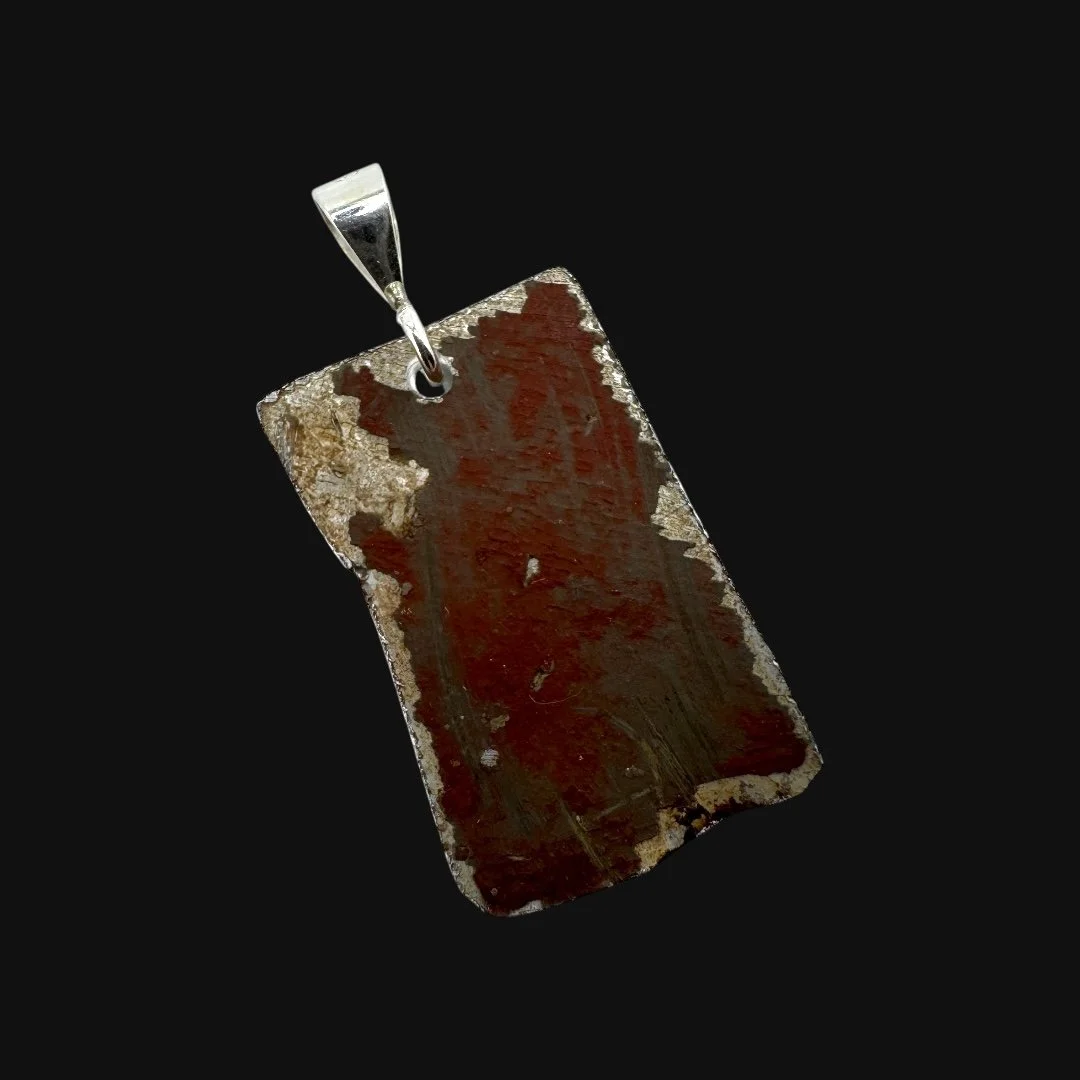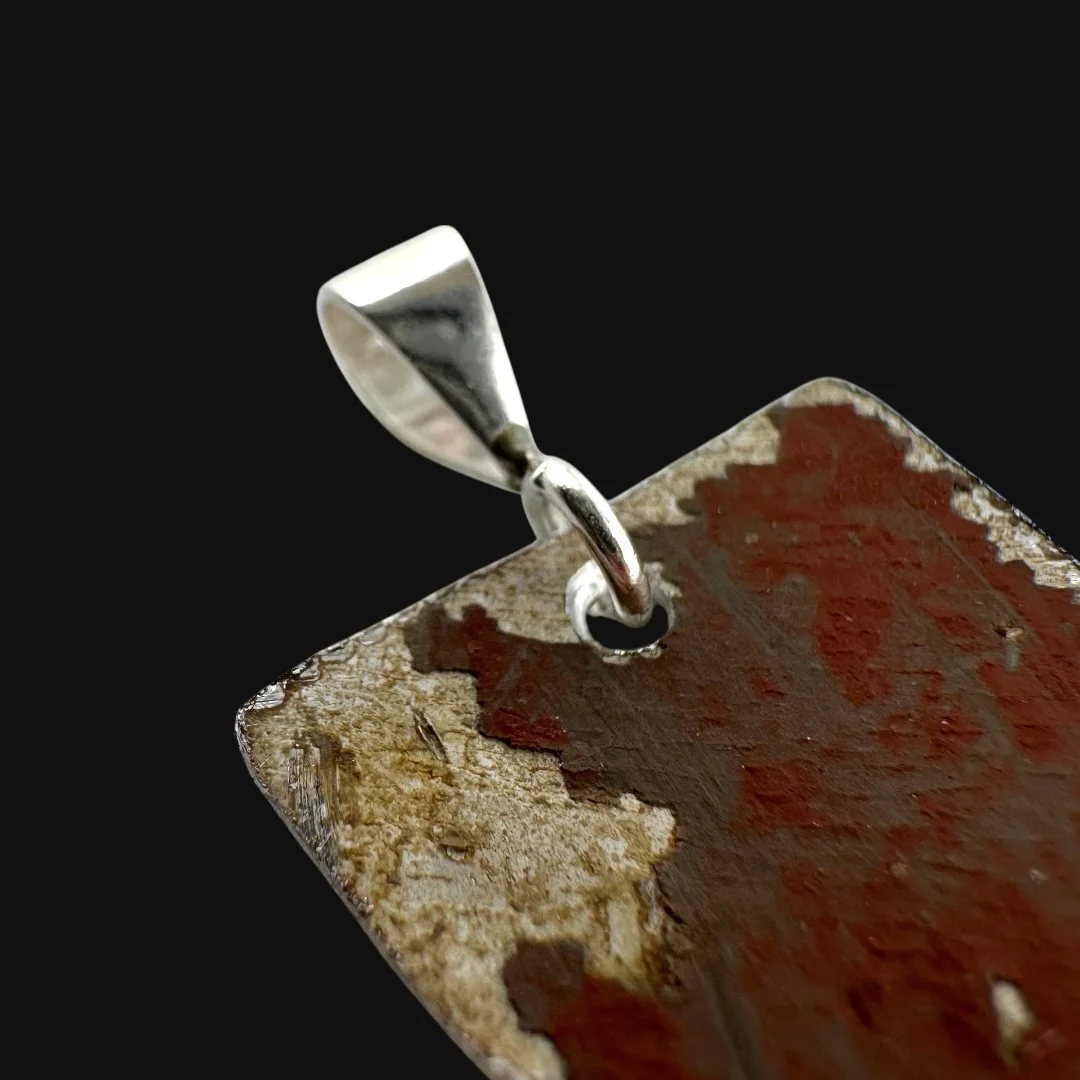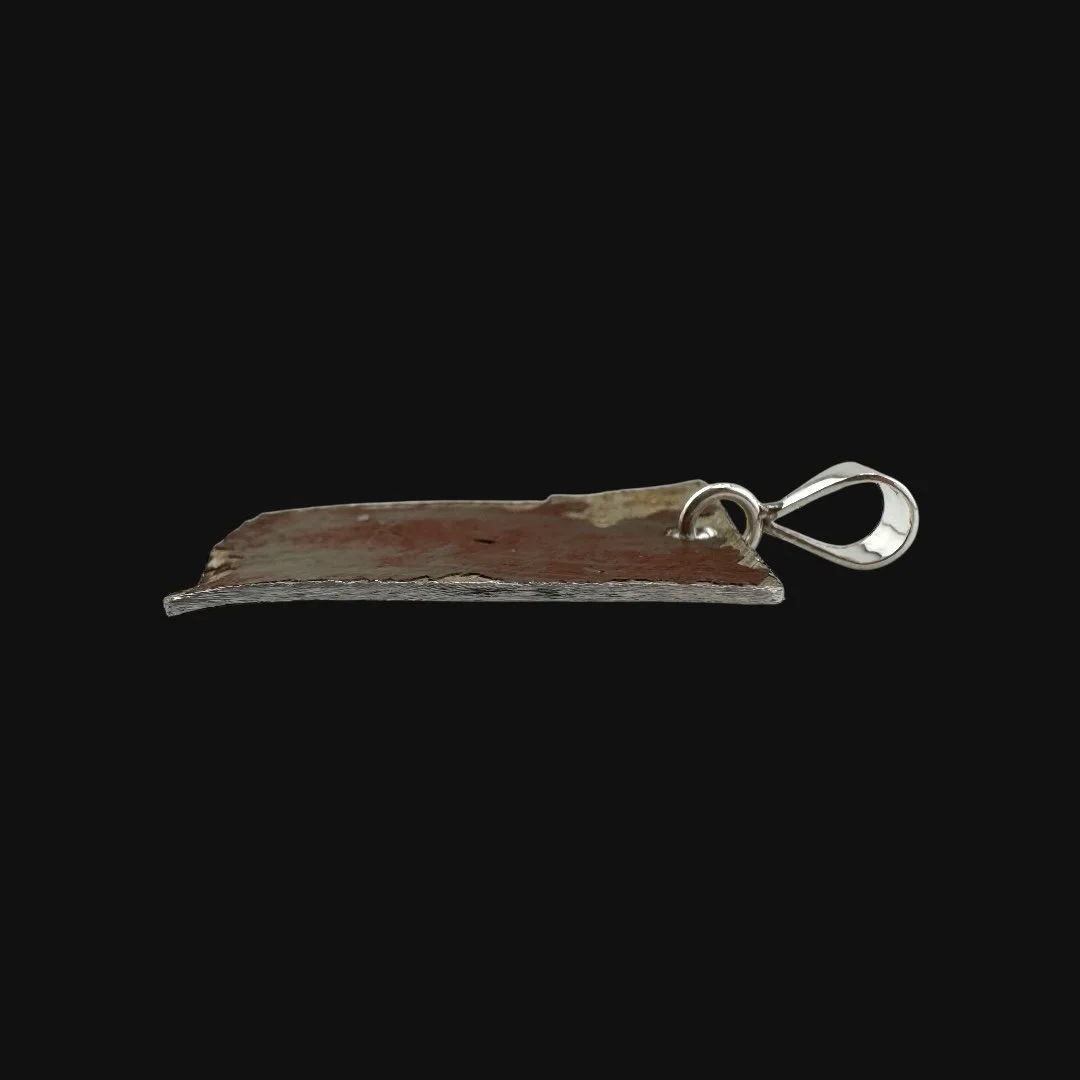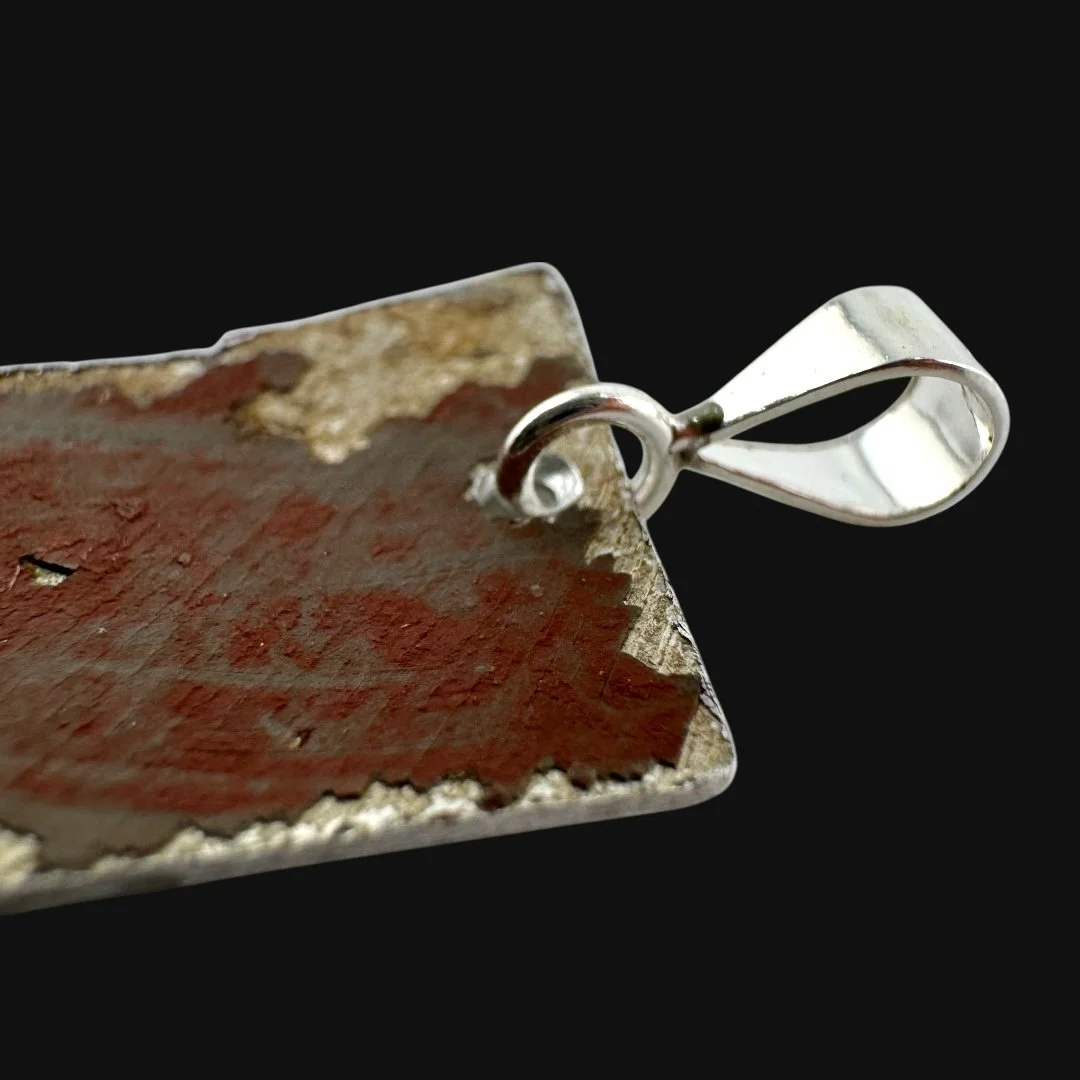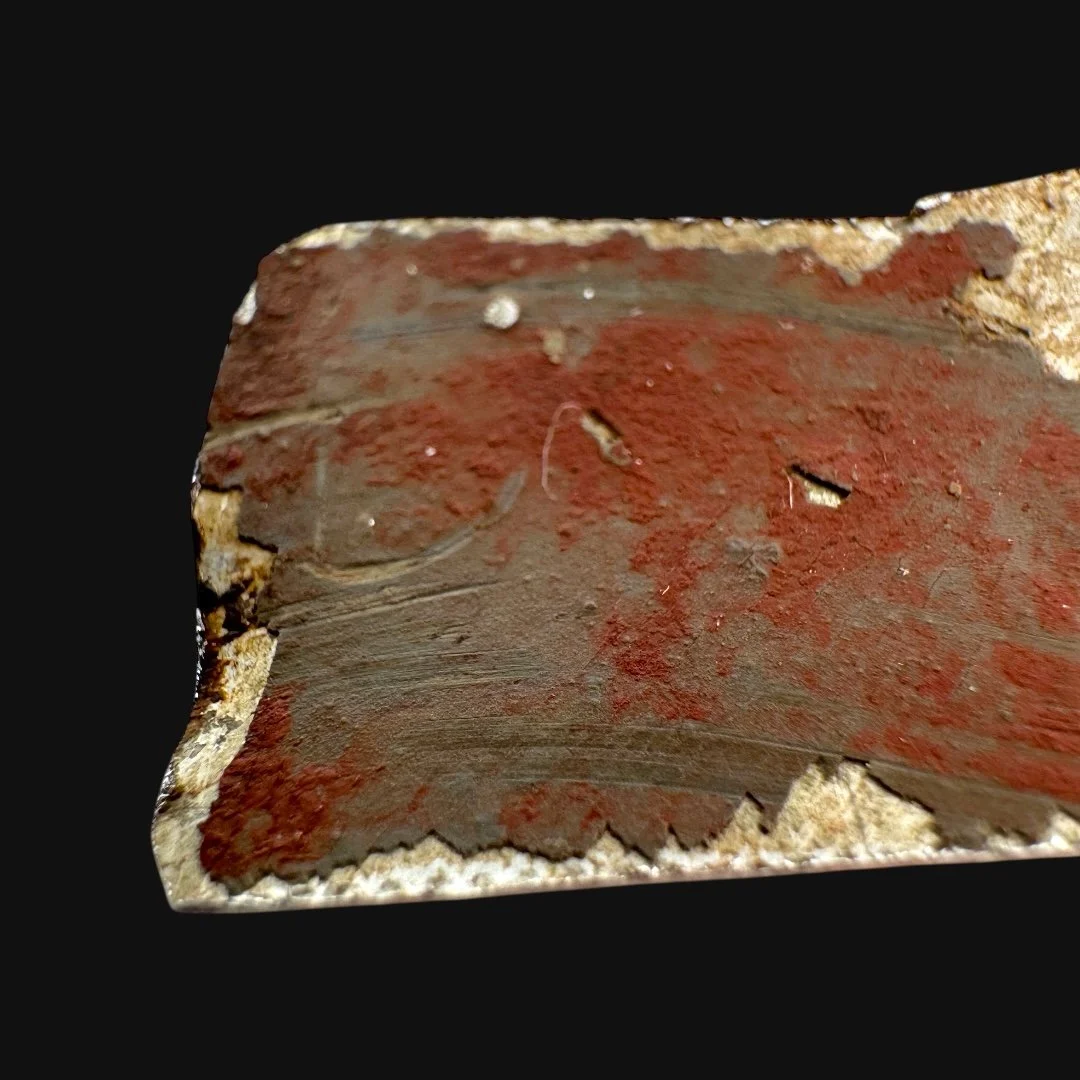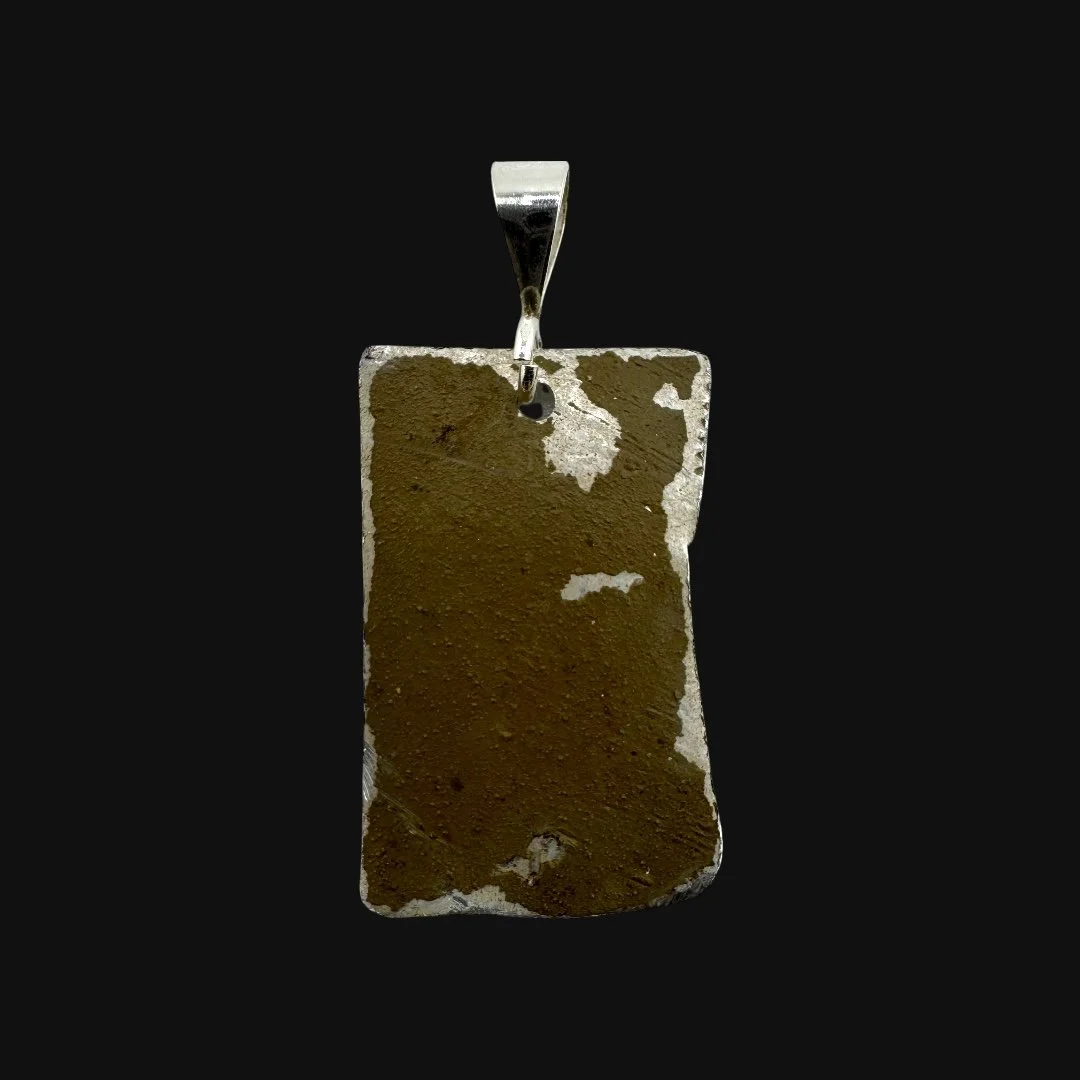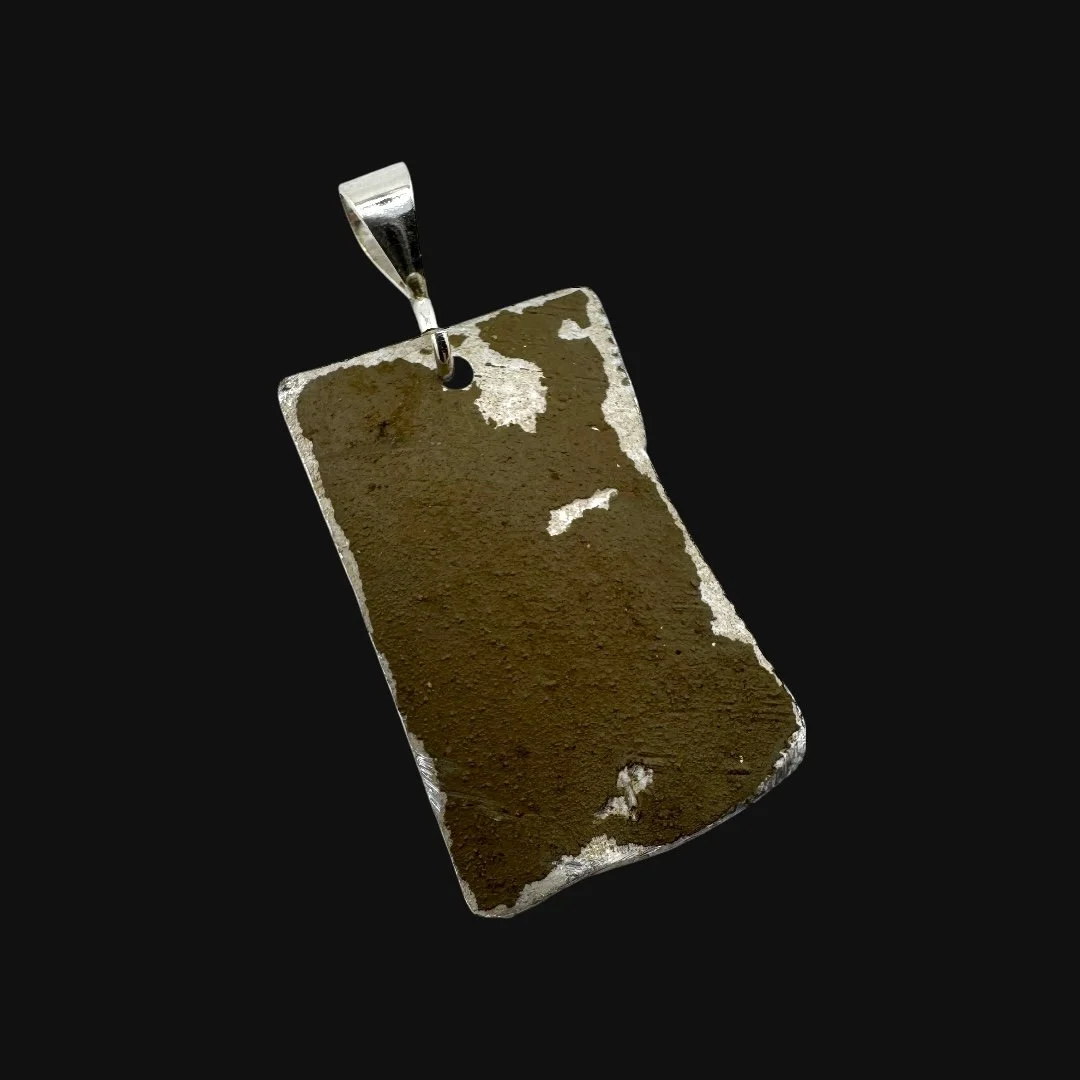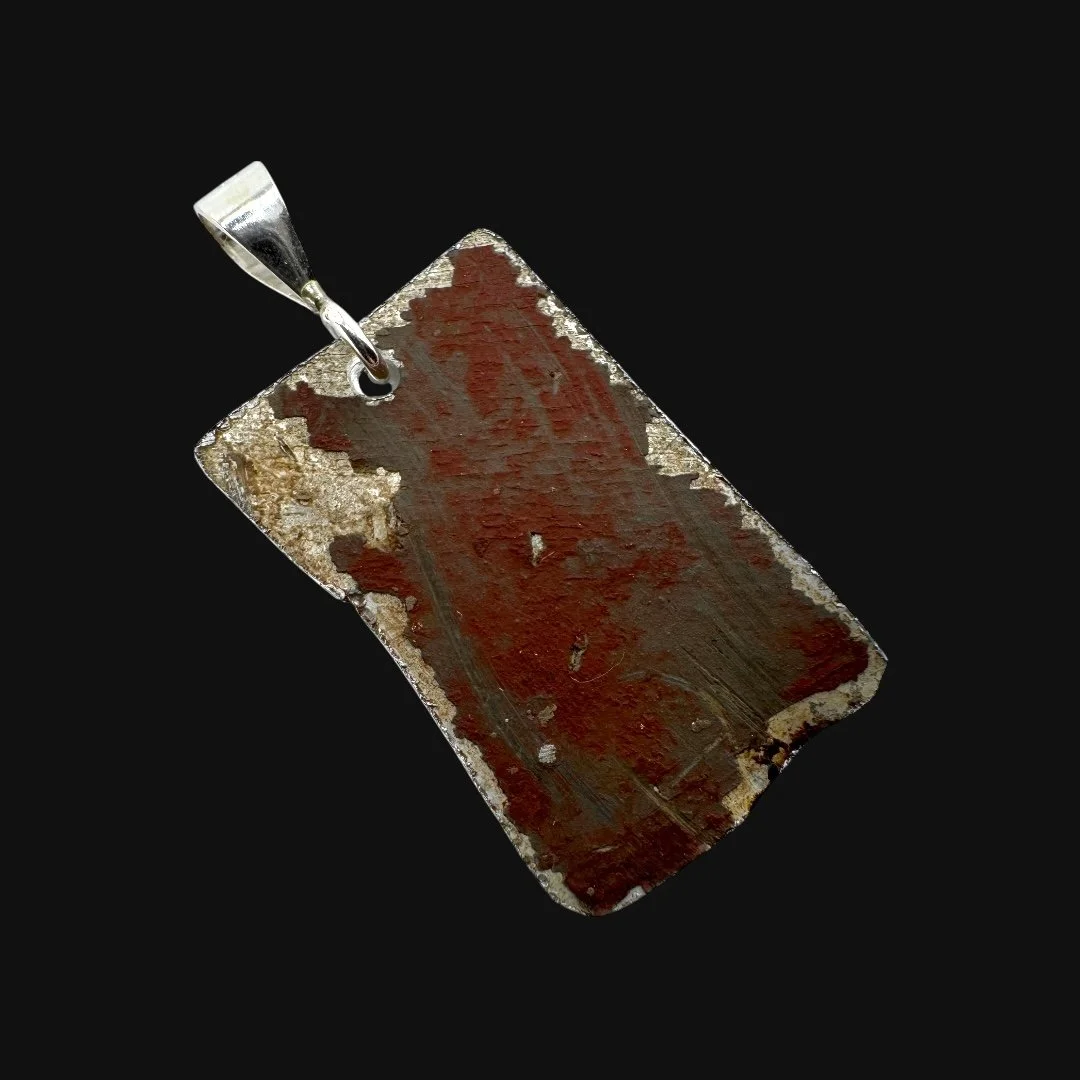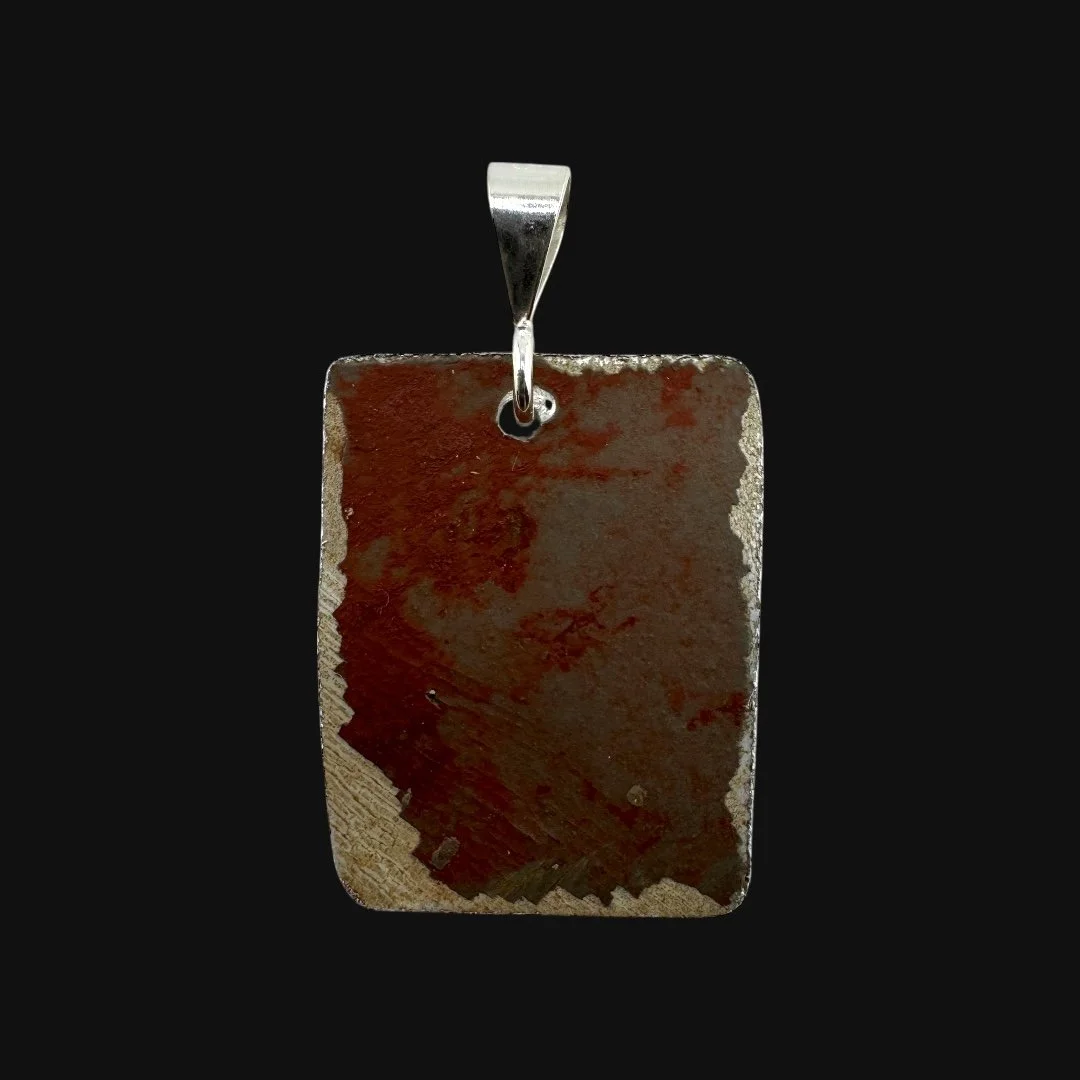 Image 1 of 13
Image 1 of 13

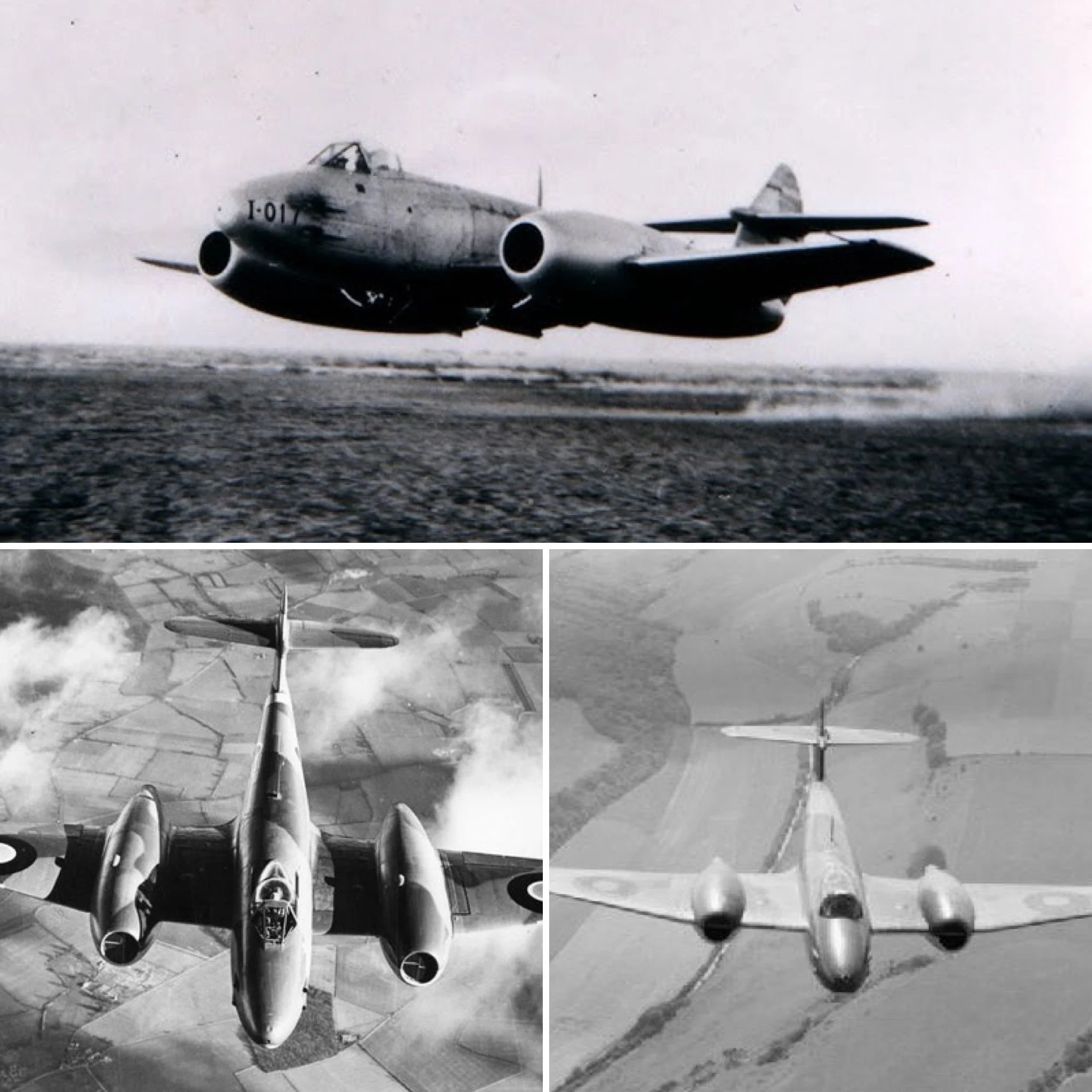 Image 2 of 13
Image 2 of 13

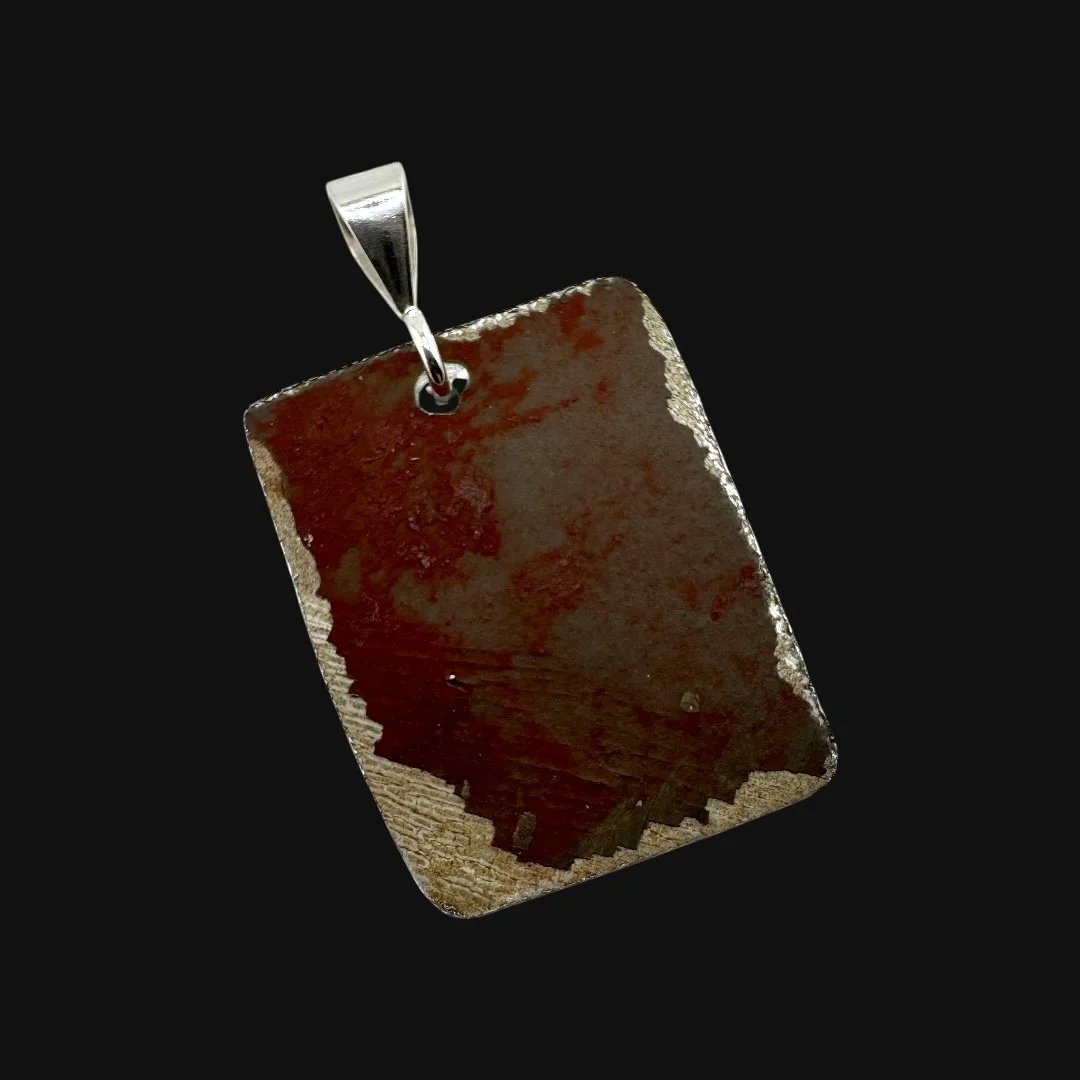 Image 3 of 13
Image 3 of 13

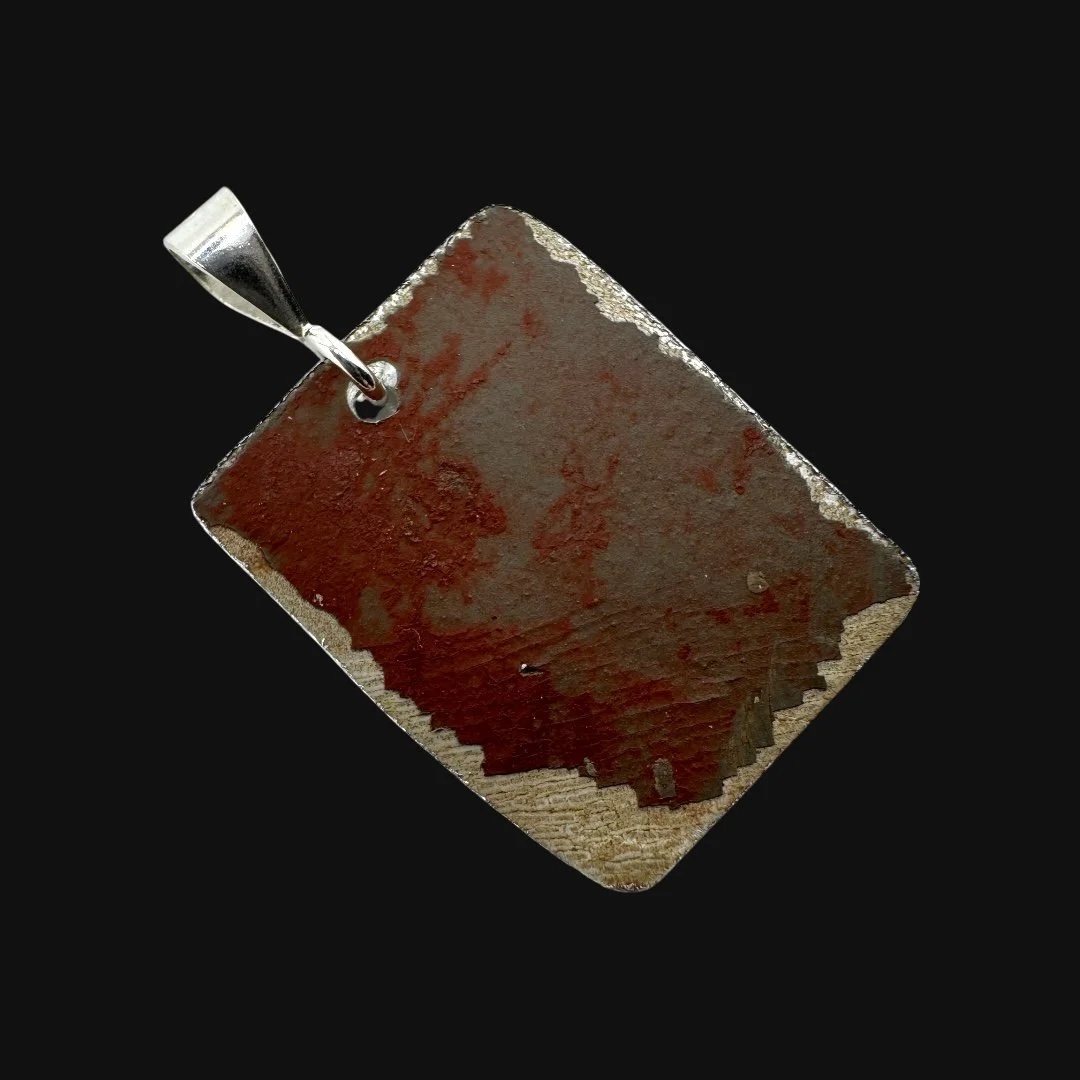 Image 4 of 13
Image 4 of 13

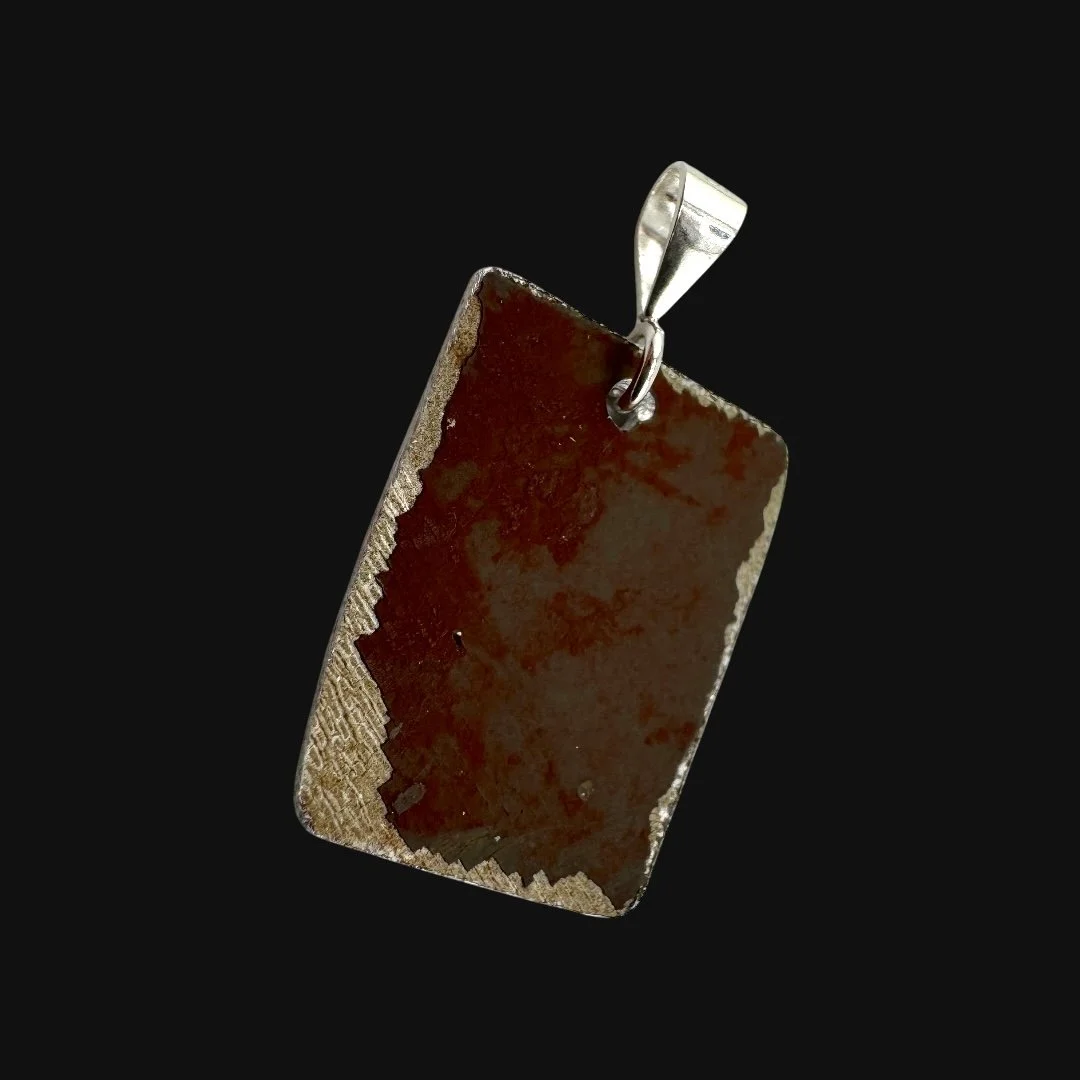 Image 5 of 13
Image 5 of 13

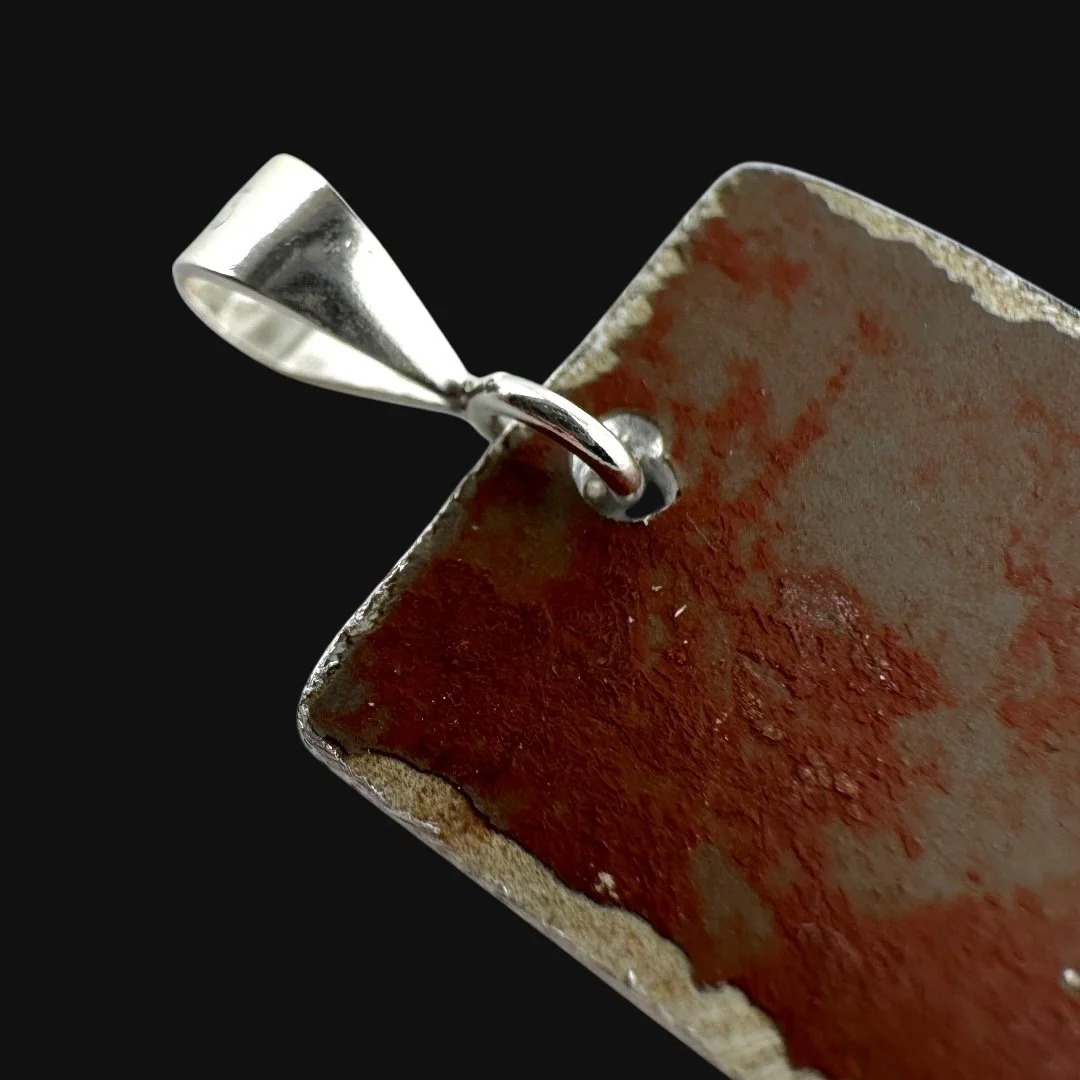 Image 6 of 13
Image 6 of 13

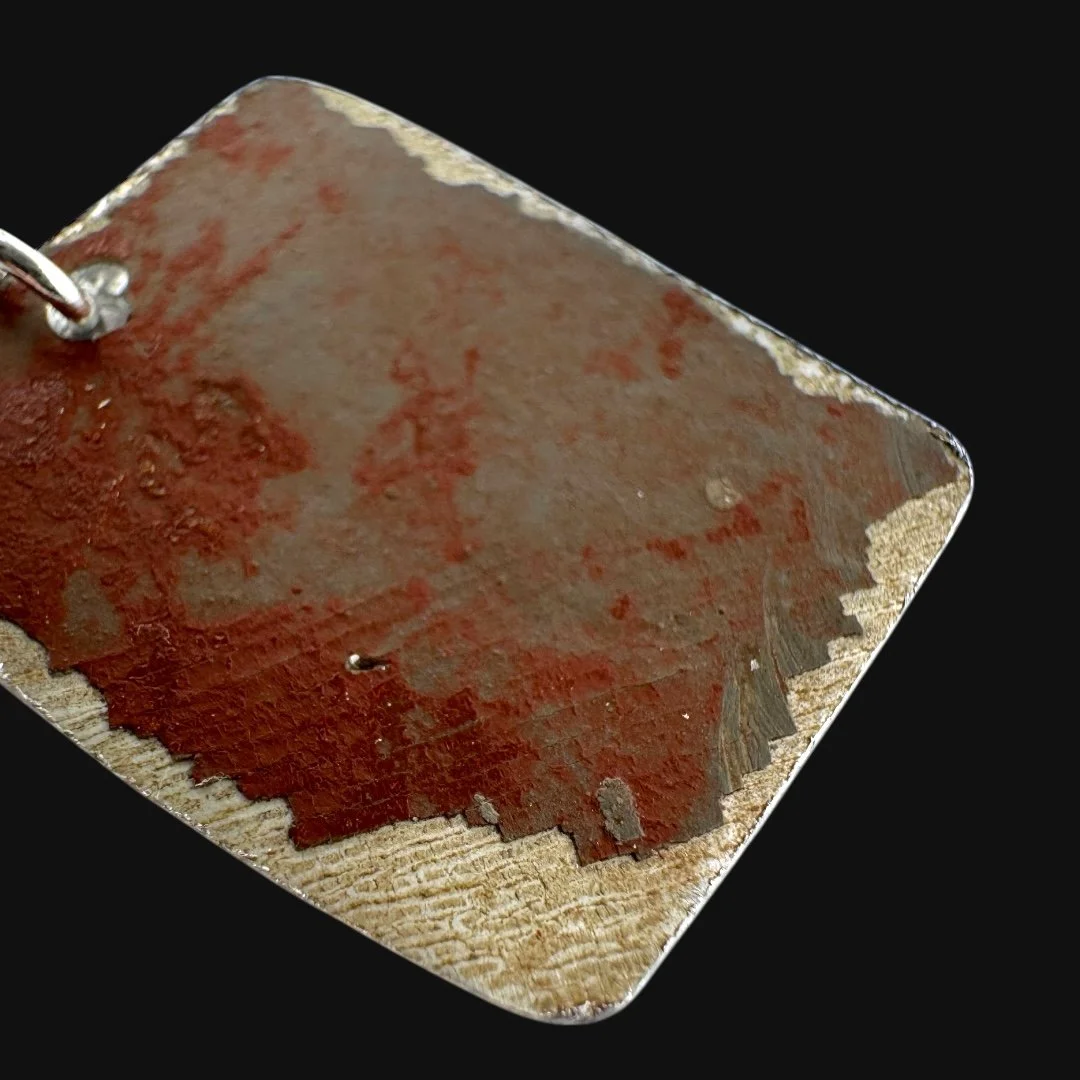 Image 7 of 13
Image 7 of 13

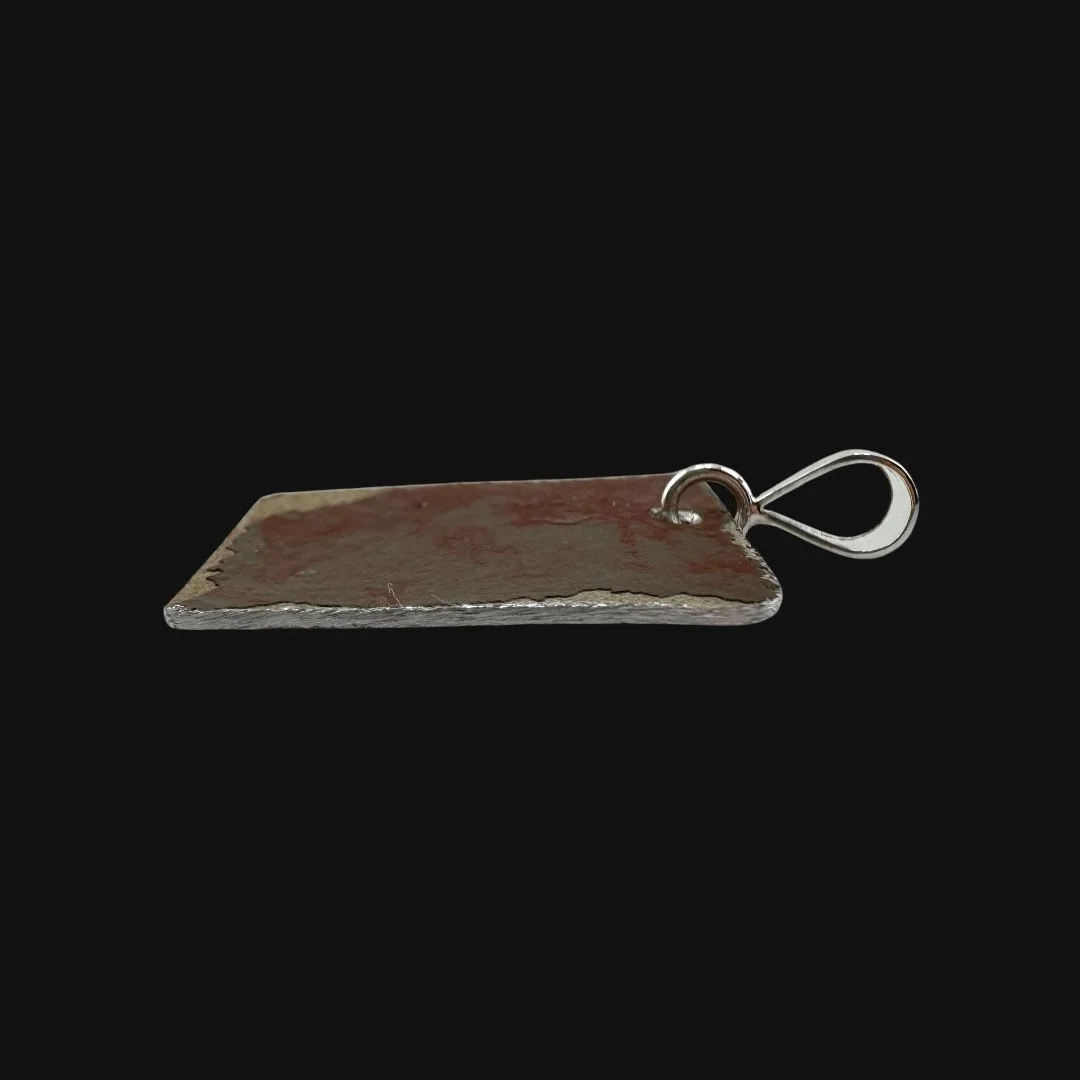 Image 8 of 13
Image 8 of 13

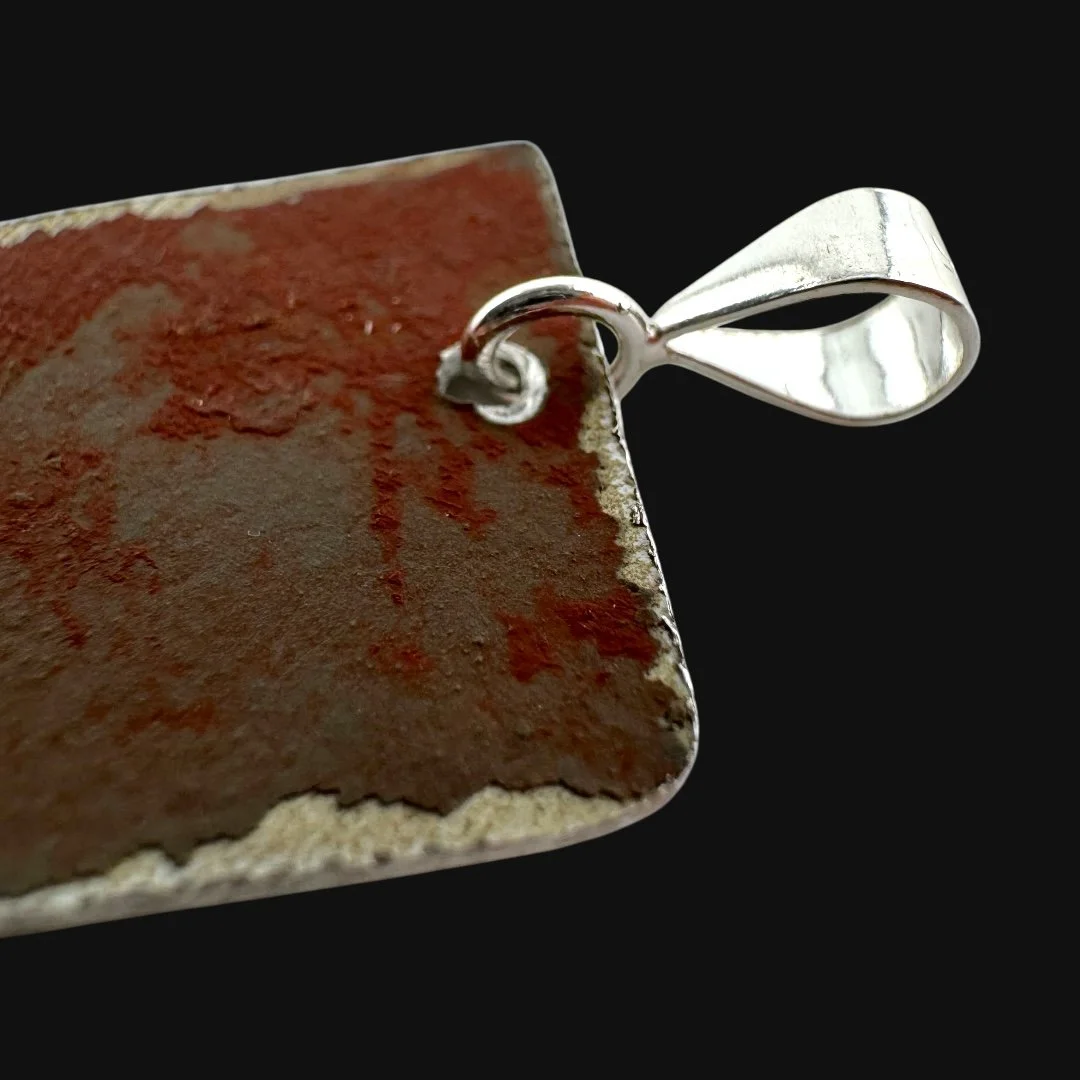 Image 9 of 13
Image 9 of 13

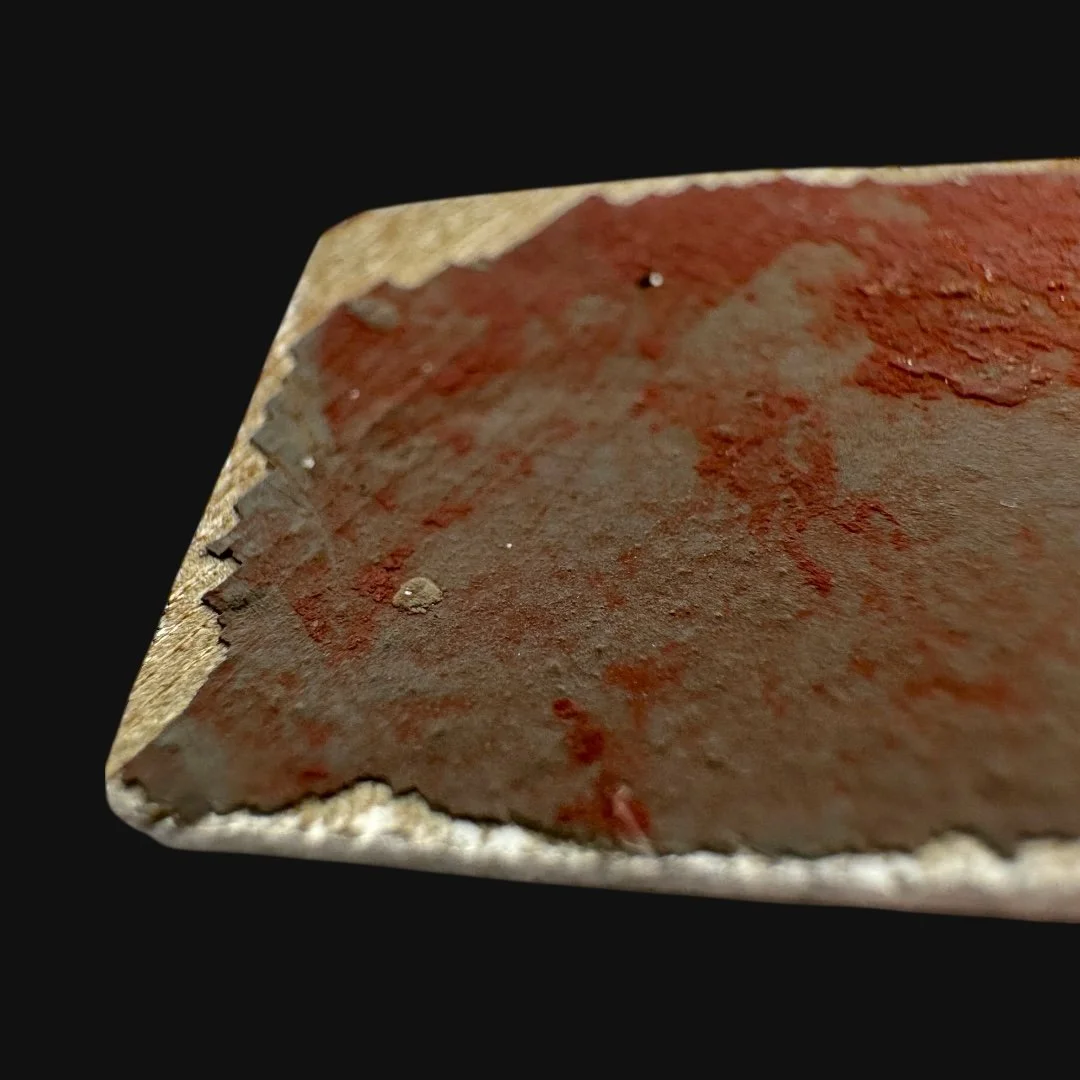 Image 10 of 13
Image 10 of 13

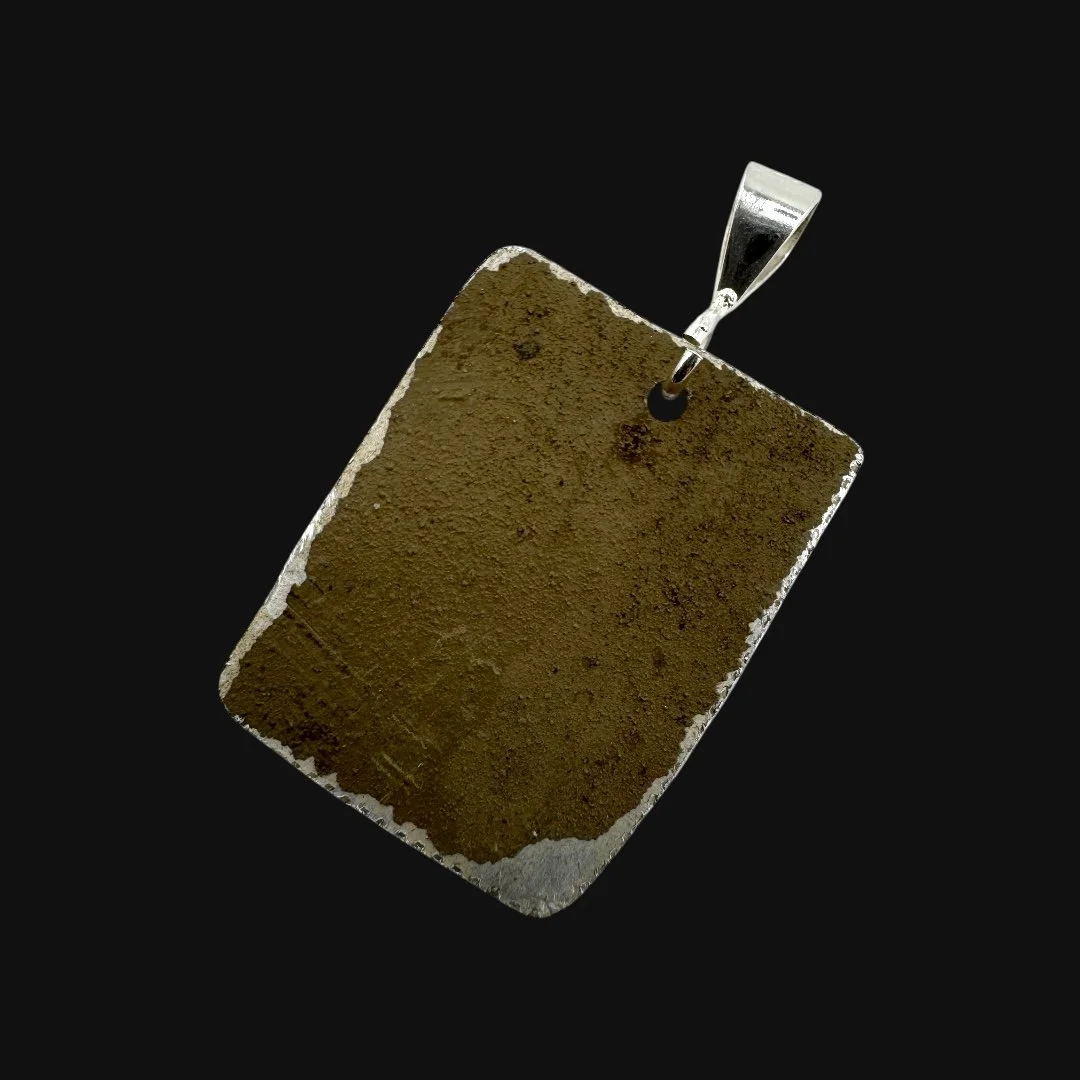 Image 11 of 13
Image 11 of 13

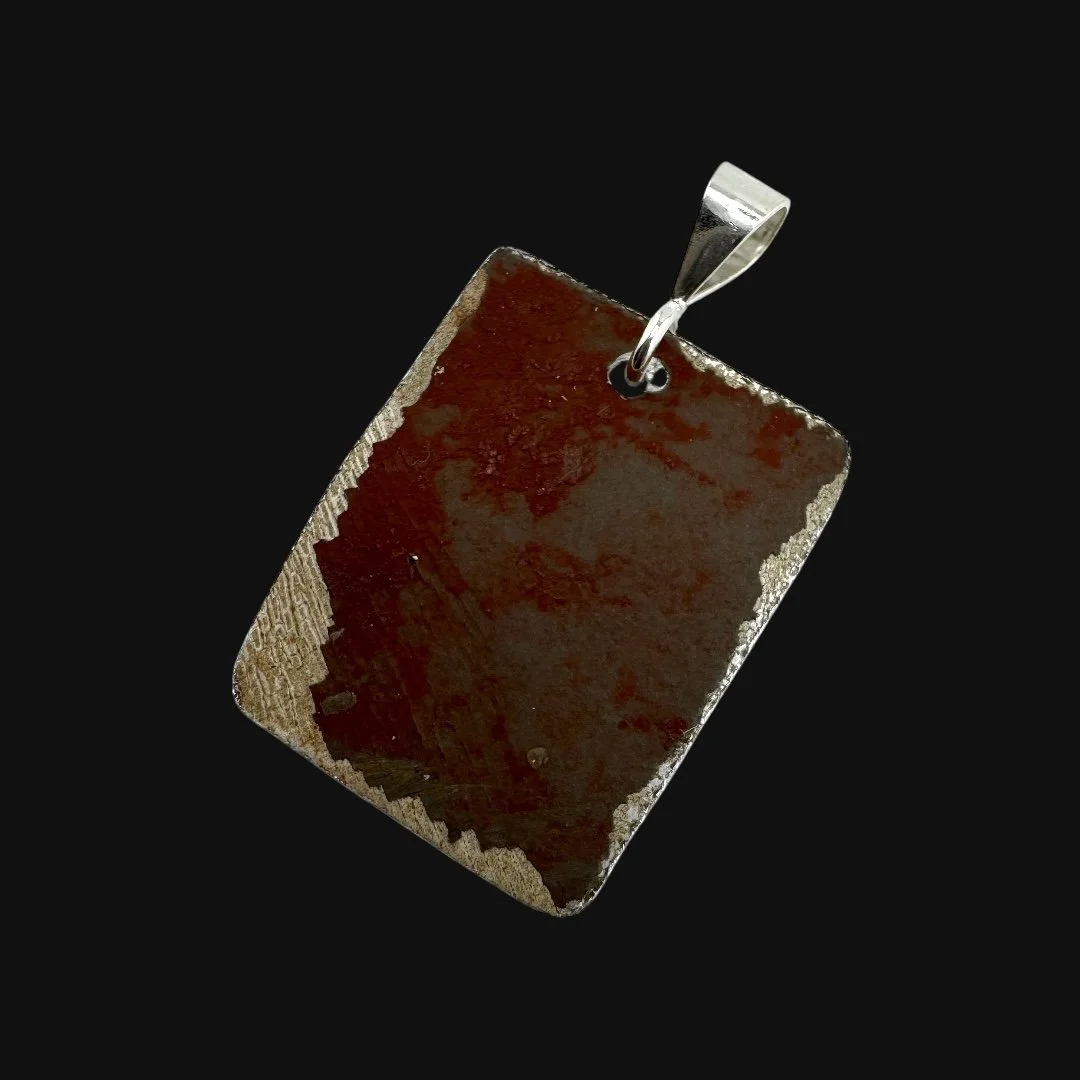 Image 12 of 13
Image 12 of 13

 Image 13 of 13
Image 13 of 13














Original WWII 1945 Royal Air Force No. 616 Squadron Gloster Meteor "Combat Flown" Melsbroek, Belgium 1st Jet Fighter Aircraft Metal Fragment Necklace Pendant (.925 Sterling Silver)
Comes with a hand-signed C.O.A. and a full historical research write-up
From: World War II
Dated: 1945
Aircraft: Gloster Meteor
Type: JetFighter Aircraft (The 1st British jet fighter and the only Allied jet to see combat during the Second World War)
From: Royal Air Force (RAF) 2nd Tactical Air Force No. 616 Squadron Gloster Meteor Aircraft Recovered From Melsbroek, Belgium
National Origin: United Kingdom (British)
Necklace Pendant Size: Roughly 1 inch x ½ inch
Pendant Clap Material: .925 Sterling Silver
*EACH WORLD WAR II “COMBAT FLOWN” AIRCRAFT METAL PENDANT IS HANDMADE AND TRULY ONE-OF-A-KIND. THIS IS THE EXACT WWII AIRCRAFT NECKLACE PENDANT YOU WILL RECEIVE.
Wearable History Collection:
This World War II necklace aircraft pendant is more truly one-of-a-kind. It is a preserved piece of an original WWII aircraft, transformed into a wearable artifact that carries with it the stories of a generation. No two pendants are alike, which makes each one truly unique and irreplaceable. Rich with aviation history, this “combat flown” aircraft pendant offers its wearer the rare chance to carry a genuine fragment of World War II aviation heritage. Every mark in the metal, every detail, holds a connection to the past and serves as a tangible reminder of courage, sacrifice, and resilience. As part of our exclusive Wearable History Collection, it is not only a timeless accessory but also a powerful conversation starter. Flown in the heat of combat during World War II and preserved across generations, this WWII aircraft pendant is a relic unlike any other. Featured in our Wearable History Collection, it represents a rare chance to wear a true fragment of the past.
Innovation and Resolve: The Significance of the Gloster Meteor
The Gloster Meteor was a revolutionary aircraft of the Second World War. As Britain’s first operational jet fighter, it represented a dramatic leap forward in aviation technology at a time when the skies of Europe were still dominated by piston-engine fighters. Unlike its German counterpart, the Me 262, which was rushed into service late in the war, the Meteor was steadily introduced into combat under the Royal Air Force, marking the beginning of a new era in aerial warfare.
Initially deployed in July 1944 with No. 616 Squadron RAF, the Meteor was first tasked with countering the V-1 flying bomb threat over Britain. Its speed made it one of the few aircraft capable of catching and destroying the pilotless weapons before they reached civilian targets. This mission demonstrated not only the Meteor’s effectiveness but also the RAF’s foresight in harnessing jet technology for both defense and offense.
The Meteor’s combat story expanded when No. 616 Squadron was deployed to the European mainland in early 1945. Operating from Melsbroek airfield in Belgium, Meteor pilots engaged in patrols, ground attack missions, and interception duties during the final push into Germany. Although deliberately kept from engaging German jets to prevent the risk of a Meteor being captured intact, the aircraft still played a critical role. It provided cover for advancing Allied armies, attacked transport networks, and demonstrated Allied mastery of jet technology at a decisive moment in the war.
For the pilots of No. 616 Squadron, flying from Melsbroek symbolized both progress and responsibility. They were not only combat aviators but pioneers, mastering an entirely new form of flight in the middle of a world war. Each mission flown from Belgian soil underscored that the age of the jet fighter had arrived, and it belonged not only to the Germans but also to the Allies who had embraced innovation and discipline.
In retrospect, the Gloster Meteor’s significance lies less in the number of enemy aircraft it destroyed than in what it represented. It was the first Allied jet to engage in wartime operations, proof that Britain had broken into a new technological frontier. Its missions with No. 616 Squadron from Melsbroek showed that jet-powered aircraft could be integrated into frontline combat, paving the way for the future of military aviation.
The Meteor’s legacy is therefore one of innovation and transition. It bridged the gap between the propeller-driven fighters of the early war and the jet age that would dominate the skies for decades to come. As both a practical weapon of war and a symbol of progress, the Gloster Meteor secured its place as one of the most influential aircraft of the twentieth century.
The Meteor in the European War:
Early Deployment and Pioneering Flights (1944)
Britain’s Jet Debut (July 1944) – The Gloster Meteor entered service with the Royal Air Force as the first operational Allied jet fighter. Initially assigned to No. 616 Squadron, the Meteor’s earliest missions were defensive, hunting V-1 flying bombs threatening British cities. With its unprecedented speed, it became one of the few aircraft able to intercept and destroy these weapons before they reached their targets.
Mastering the Jet Age – Pilots had to quickly adapt to jet propulsion, learning new tactics and flight characteristics. Unlike piston-engine fighters, the Meteor offered blistering speed and smooth performance, but demanded innovation in aerial combat methods.
To the Continent (Late 1944 – 1945)
Arrival in Europe – In early 1945, No. 616 Squadron deployed to Melsbroek Airfield in Belgium, bringing the Meteor into the heart of the European war. Operating from forward bases placed the jet within striking distance of German forces, marking the Allies’ full embrace of jet technology on the continent.
Operational Missions – While restricted from direct combat with German Me 262 jets to prevent capture of Allied jet technology, the Meteors carried out patrols, reconnaissance, and ground attack missions. They strafed transport networks, targeted enemy airfields, and provided cover for advancing Allied armies as they pressed deeper into German-held territory.
The Final Push into Germany (1945)
Rhine Operations – From Melsbroek, Meteors supported operations during the Allied crossing of the Rhine, flying missions against retreating German units and striking supply lines. Their presence signaled not only combat effectiveness but also the Allies’ technological superiority as the war neared its conclusion.
Consolidation of Air Power – By spring 1945, Meteor squadrons were fully integrated into RAF operations in Europe. Though their combat record was limited compared to piston-engine fighters, their arrival marked a decisive step into the future of air warfare.
The Legacy Within This WWII Necklace Pendant:
This handcrafted World War II necklace pendant has been created from the very metal of a Gloster Meteor, the first operational British jet fighter and the only Allied jet aircraft to see combat during the war. Flown by No. 616 Squadron of the Royal Air Force, Meteors represented the dawn of a new age in aviation. In early 1945, they were stationed at Melsbroek Airfield in Belgium, where they carried out patrols, ground attack missions, and reconnaissance flights during the final Allied push into Germany.
Every detail in the metal carries the echoes of that transformation. It recalls the roar of jet engines lifting from Belgian runways, the urgency of pilots adapting to an entirely new form of flight, and the determination to carry the fight into the heart of occupied Europe. Forged into a pendant, this fragment ceases to be just a remnant of a machine. It becomes a symbol of innovation, resilience, and the moment the jet age took its place on the battlefield.
Each pendant is one of a kind, carrying its own story of survival. To wear it is to hold not just jewelry, but a piece of history that marked the turning point from propellers to jets. It sparks conversation, invites reflection, and connects the present to the courage of those who flew into uncharted skies. More than an accessory, this pendant is a living fragment of history. A remembrance of sacrifice. And a tribute to the pioneering spirit of the men and machines of No. 616 Squadron RAF at Melsbroek.
Comes with a hand-signed C.O.A. and a full historical research write-up
From: World War II
Dated: 1945
Aircraft: Gloster Meteor
Type: JetFighter Aircraft (The 1st British jet fighter and the only Allied jet to see combat during the Second World War)
From: Royal Air Force (RAF) 2nd Tactical Air Force No. 616 Squadron Gloster Meteor Aircraft Recovered From Melsbroek, Belgium
National Origin: United Kingdom (British)
Necklace Pendant Size: Roughly 1 inch x ½ inch
Pendant Clap Material: .925 Sterling Silver
*EACH WORLD WAR II “COMBAT FLOWN” AIRCRAFT METAL PENDANT IS HANDMADE AND TRULY ONE-OF-A-KIND. THIS IS THE EXACT WWII AIRCRAFT NECKLACE PENDANT YOU WILL RECEIVE.
Wearable History Collection:
This World War II necklace aircraft pendant is more truly one-of-a-kind. It is a preserved piece of an original WWII aircraft, transformed into a wearable artifact that carries with it the stories of a generation. No two pendants are alike, which makes each one truly unique and irreplaceable. Rich with aviation history, this “combat flown” aircraft pendant offers its wearer the rare chance to carry a genuine fragment of World War II aviation heritage. Every mark in the metal, every detail, holds a connection to the past and serves as a tangible reminder of courage, sacrifice, and resilience. As part of our exclusive Wearable History Collection, it is not only a timeless accessory but also a powerful conversation starter. Flown in the heat of combat during World War II and preserved across generations, this WWII aircraft pendant is a relic unlike any other. Featured in our Wearable History Collection, it represents a rare chance to wear a true fragment of the past.
Innovation and Resolve: The Significance of the Gloster Meteor
The Gloster Meteor was a revolutionary aircraft of the Second World War. As Britain’s first operational jet fighter, it represented a dramatic leap forward in aviation technology at a time when the skies of Europe were still dominated by piston-engine fighters. Unlike its German counterpart, the Me 262, which was rushed into service late in the war, the Meteor was steadily introduced into combat under the Royal Air Force, marking the beginning of a new era in aerial warfare.
Initially deployed in July 1944 with No. 616 Squadron RAF, the Meteor was first tasked with countering the V-1 flying bomb threat over Britain. Its speed made it one of the few aircraft capable of catching and destroying the pilotless weapons before they reached civilian targets. This mission demonstrated not only the Meteor’s effectiveness but also the RAF’s foresight in harnessing jet technology for both defense and offense.
The Meteor’s combat story expanded when No. 616 Squadron was deployed to the European mainland in early 1945. Operating from Melsbroek airfield in Belgium, Meteor pilots engaged in patrols, ground attack missions, and interception duties during the final push into Germany. Although deliberately kept from engaging German jets to prevent the risk of a Meteor being captured intact, the aircraft still played a critical role. It provided cover for advancing Allied armies, attacked transport networks, and demonstrated Allied mastery of jet technology at a decisive moment in the war.
For the pilots of No. 616 Squadron, flying from Melsbroek symbolized both progress and responsibility. They were not only combat aviators but pioneers, mastering an entirely new form of flight in the middle of a world war. Each mission flown from Belgian soil underscored that the age of the jet fighter had arrived, and it belonged not only to the Germans but also to the Allies who had embraced innovation and discipline.
In retrospect, the Gloster Meteor’s significance lies less in the number of enemy aircraft it destroyed than in what it represented. It was the first Allied jet to engage in wartime operations, proof that Britain had broken into a new technological frontier. Its missions with No. 616 Squadron from Melsbroek showed that jet-powered aircraft could be integrated into frontline combat, paving the way for the future of military aviation.
The Meteor’s legacy is therefore one of innovation and transition. It bridged the gap between the propeller-driven fighters of the early war and the jet age that would dominate the skies for decades to come. As both a practical weapon of war and a symbol of progress, the Gloster Meteor secured its place as one of the most influential aircraft of the twentieth century.
The Meteor in the European War:
Early Deployment and Pioneering Flights (1944)
Britain’s Jet Debut (July 1944) – The Gloster Meteor entered service with the Royal Air Force as the first operational Allied jet fighter. Initially assigned to No. 616 Squadron, the Meteor’s earliest missions were defensive, hunting V-1 flying bombs threatening British cities. With its unprecedented speed, it became one of the few aircraft able to intercept and destroy these weapons before they reached their targets.
Mastering the Jet Age – Pilots had to quickly adapt to jet propulsion, learning new tactics and flight characteristics. Unlike piston-engine fighters, the Meteor offered blistering speed and smooth performance, but demanded innovation in aerial combat methods.
To the Continent (Late 1944 – 1945)
Arrival in Europe – In early 1945, No. 616 Squadron deployed to Melsbroek Airfield in Belgium, bringing the Meteor into the heart of the European war. Operating from forward bases placed the jet within striking distance of German forces, marking the Allies’ full embrace of jet technology on the continent.
Operational Missions – While restricted from direct combat with German Me 262 jets to prevent capture of Allied jet technology, the Meteors carried out patrols, reconnaissance, and ground attack missions. They strafed transport networks, targeted enemy airfields, and provided cover for advancing Allied armies as they pressed deeper into German-held territory.
The Final Push into Germany (1945)
Rhine Operations – From Melsbroek, Meteors supported operations during the Allied crossing of the Rhine, flying missions against retreating German units and striking supply lines. Their presence signaled not only combat effectiveness but also the Allies’ technological superiority as the war neared its conclusion.
Consolidation of Air Power – By spring 1945, Meteor squadrons were fully integrated into RAF operations in Europe. Though their combat record was limited compared to piston-engine fighters, their arrival marked a decisive step into the future of air warfare.
The Legacy Within This WWII Necklace Pendant:
This handcrafted World War II necklace pendant has been created from the very metal of a Gloster Meteor, the first operational British jet fighter and the only Allied jet aircraft to see combat during the war. Flown by No. 616 Squadron of the Royal Air Force, Meteors represented the dawn of a new age in aviation. In early 1945, they were stationed at Melsbroek Airfield in Belgium, where they carried out patrols, ground attack missions, and reconnaissance flights during the final Allied push into Germany.
Every detail in the metal carries the echoes of that transformation. It recalls the roar of jet engines lifting from Belgian runways, the urgency of pilots adapting to an entirely new form of flight, and the determination to carry the fight into the heart of occupied Europe. Forged into a pendant, this fragment ceases to be just a remnant of a machine. It becomes a symbol of innovation, resilience, and the moment the jet age took its place on the battlefield.
Each pendant is one of a kind, carrying its own story of survival. To wear it is to hold not just jewelry, but a piece of history that marked the turning point from propellers to jets. It sparks conversation, invites reflection, and connects the present to the courage of those who flew into uncharted skies. More than an accessory, this pendant is a living fragment of history. A remembrance of sacrifice. And a tribute to the pioneering spirit of the men and machines of No. 616 Squadron RAF at Melsbroek.
